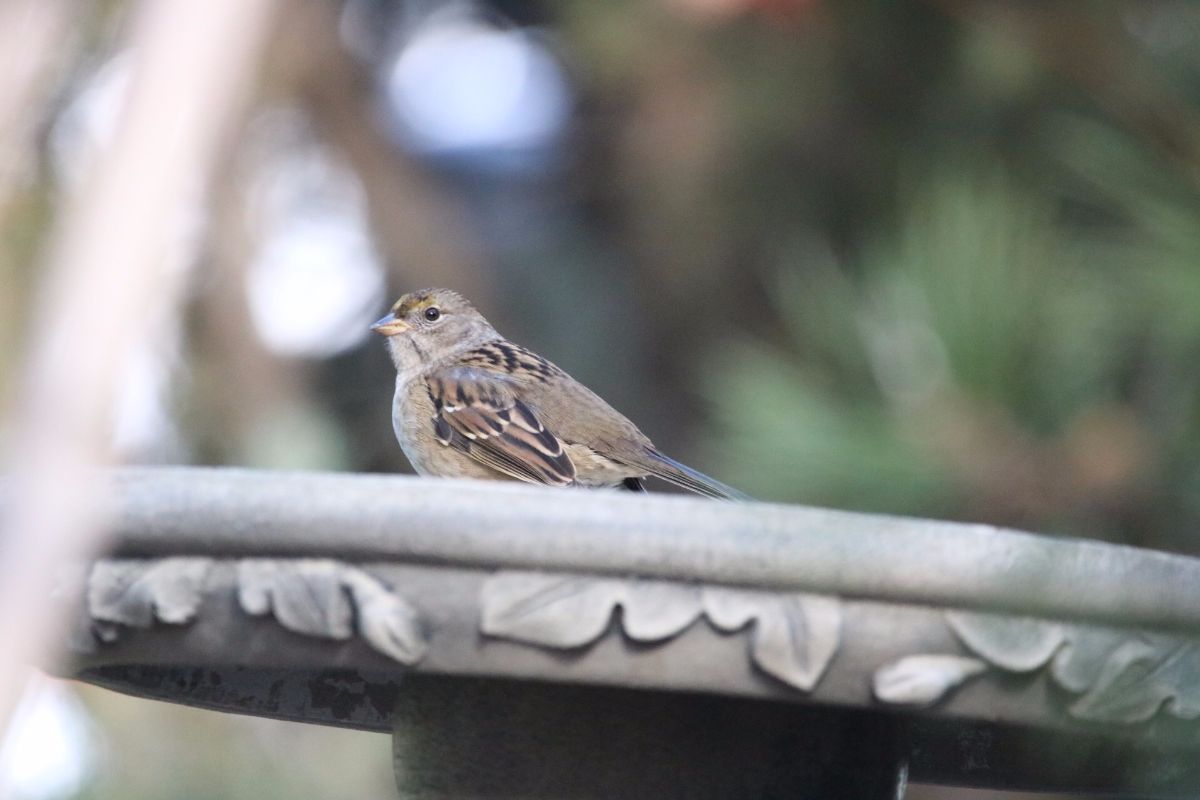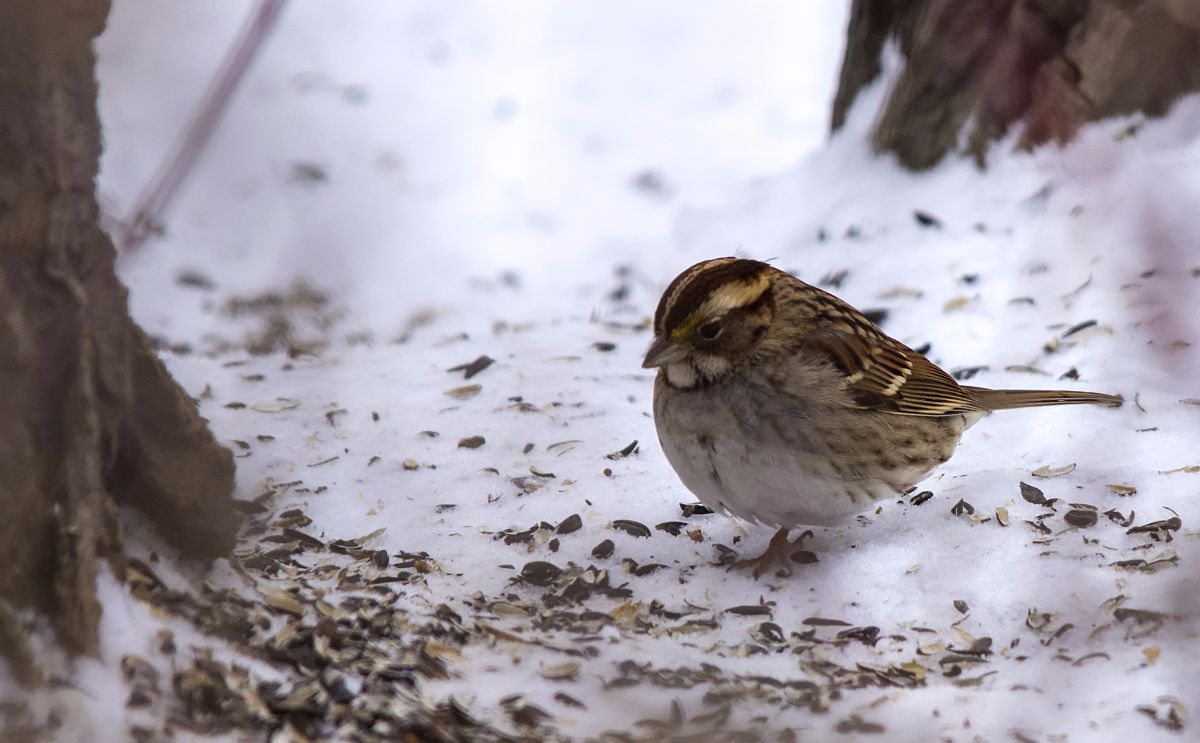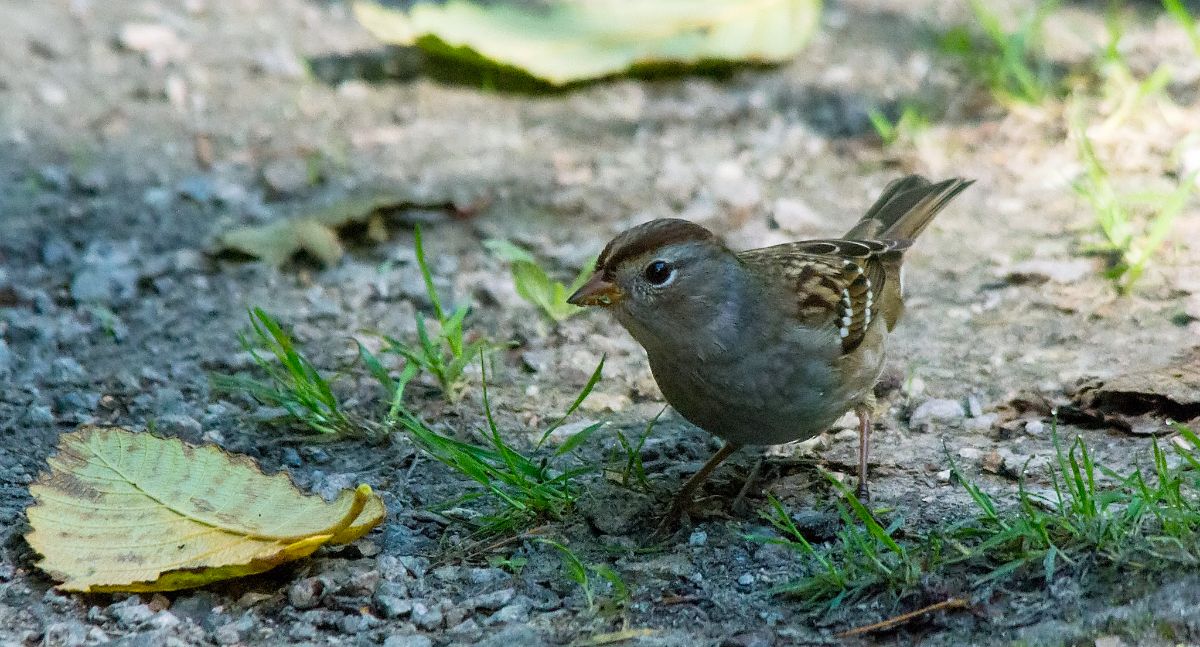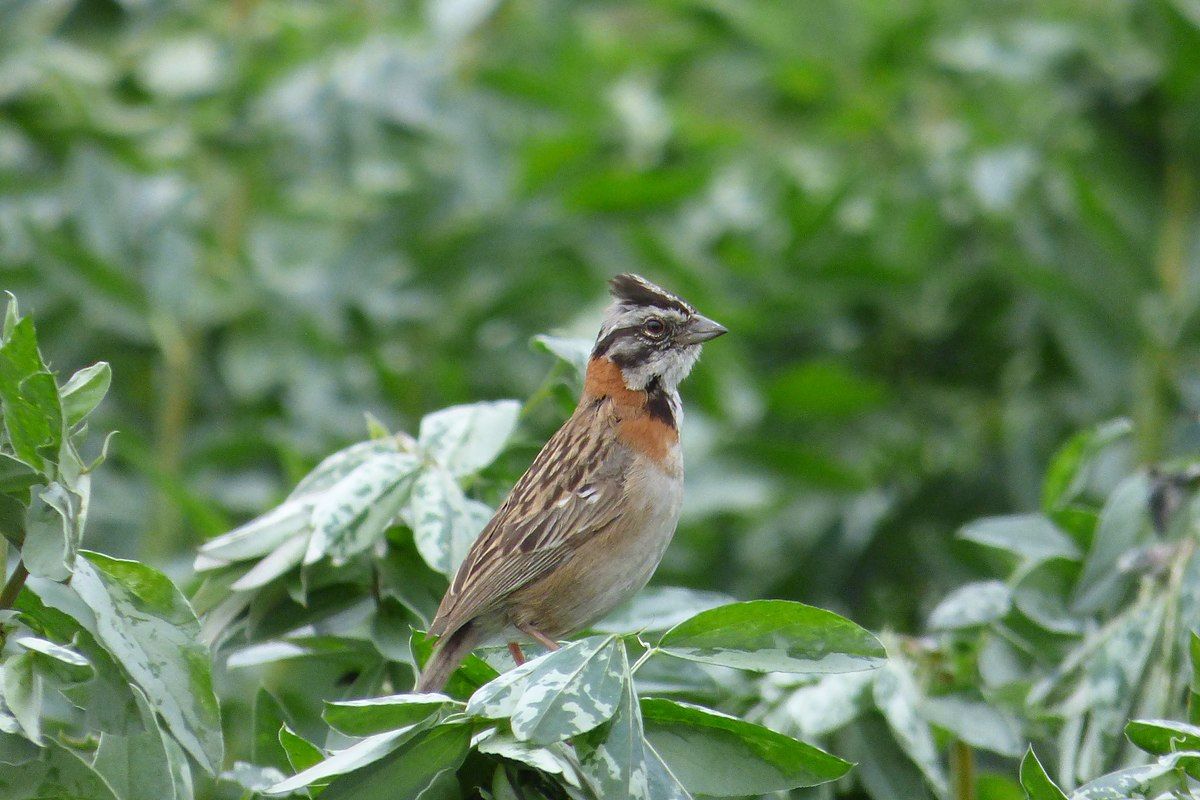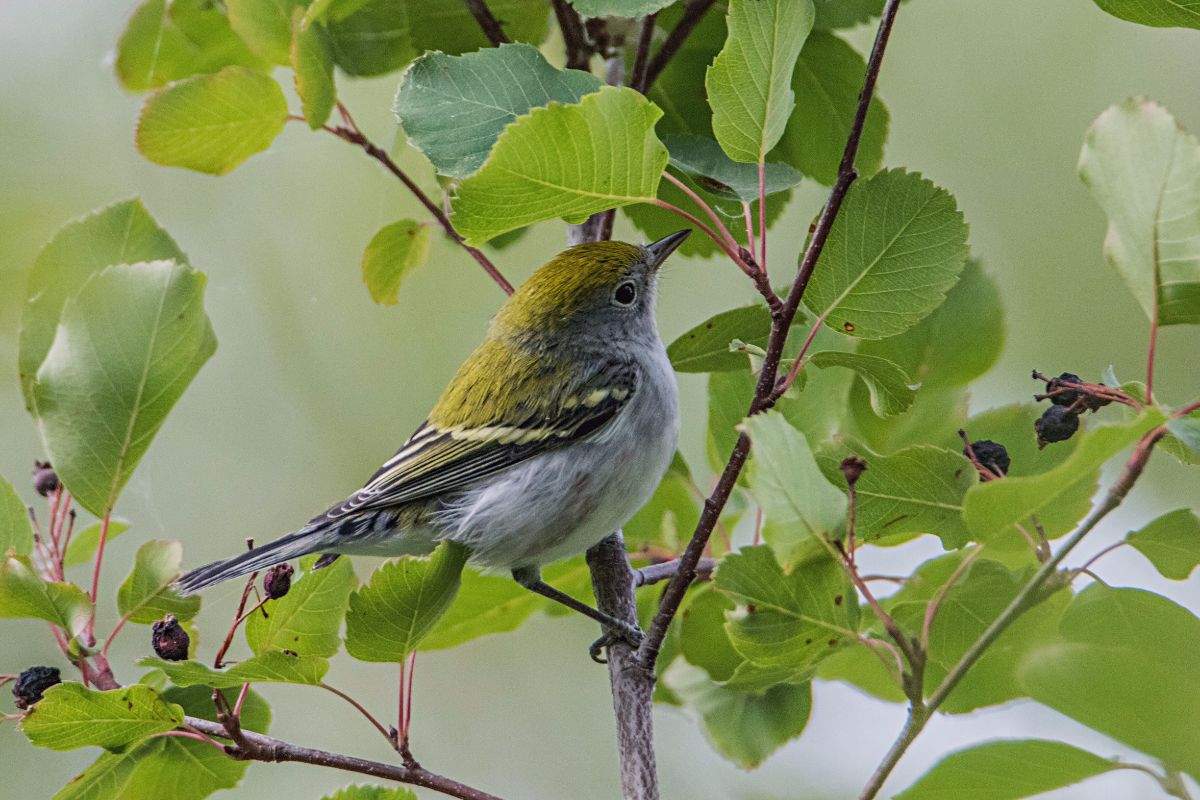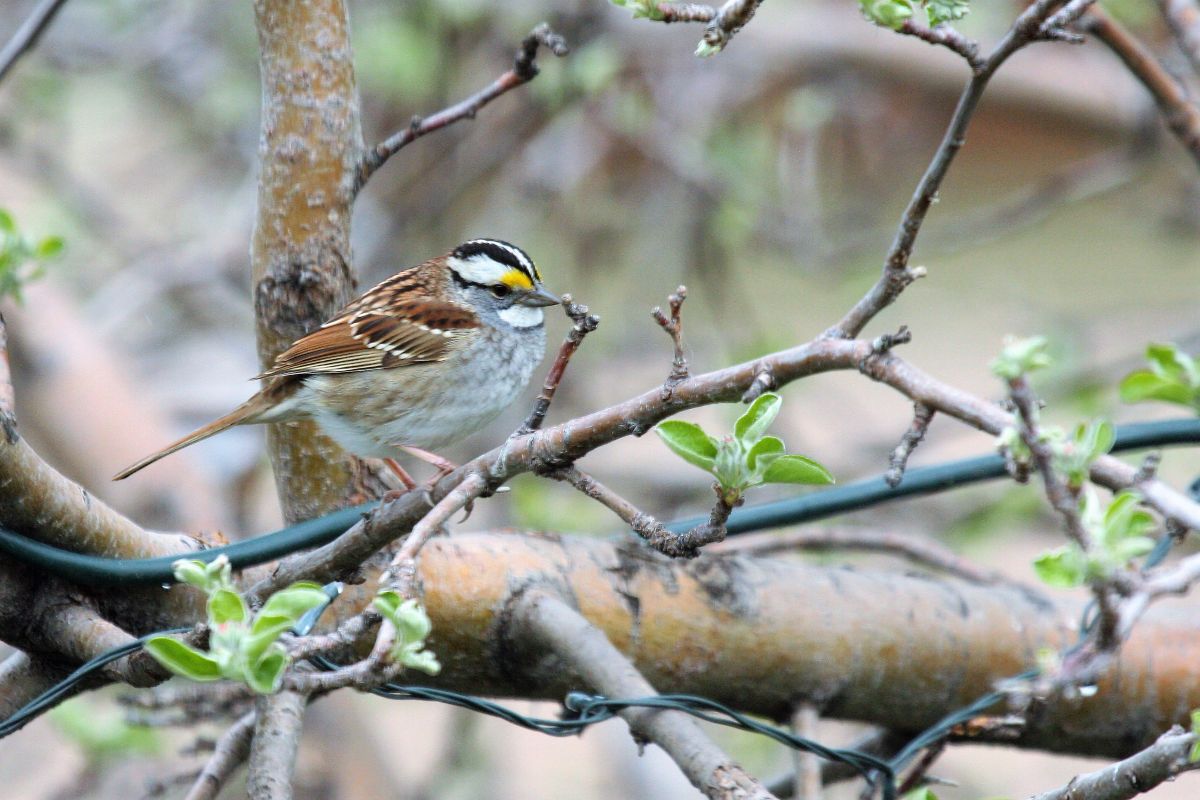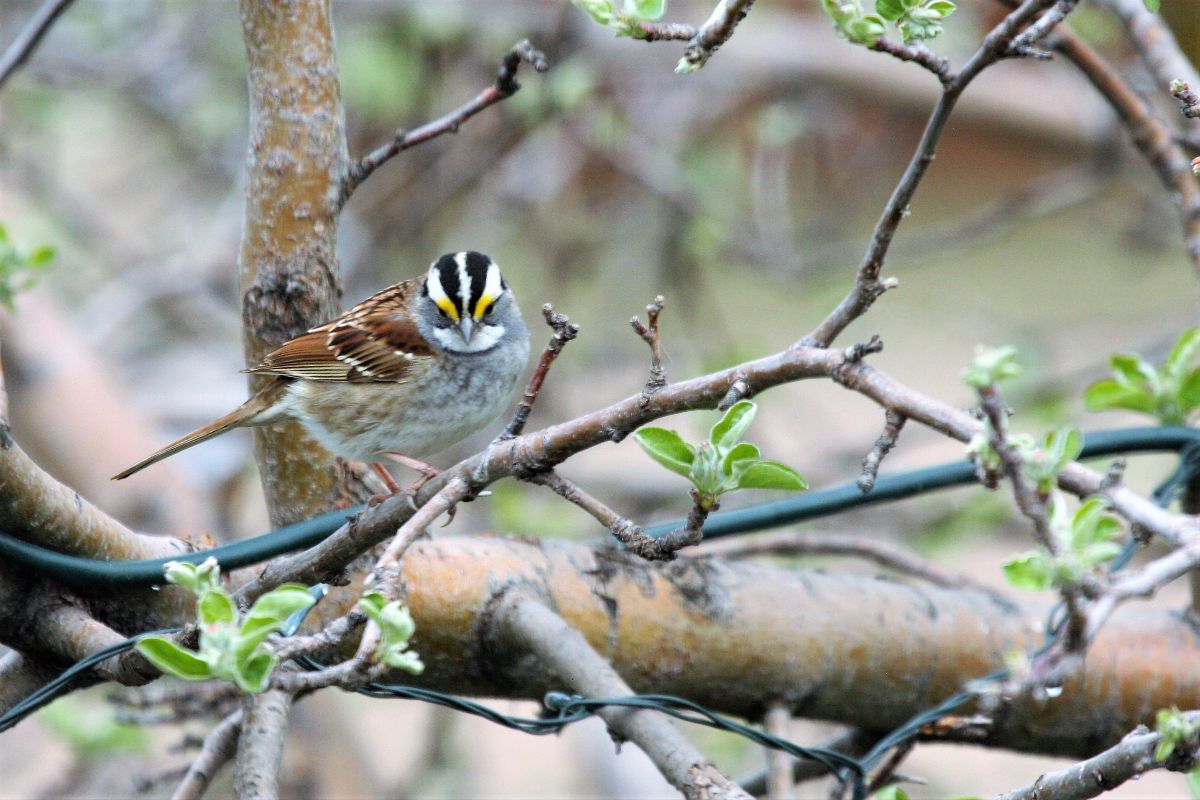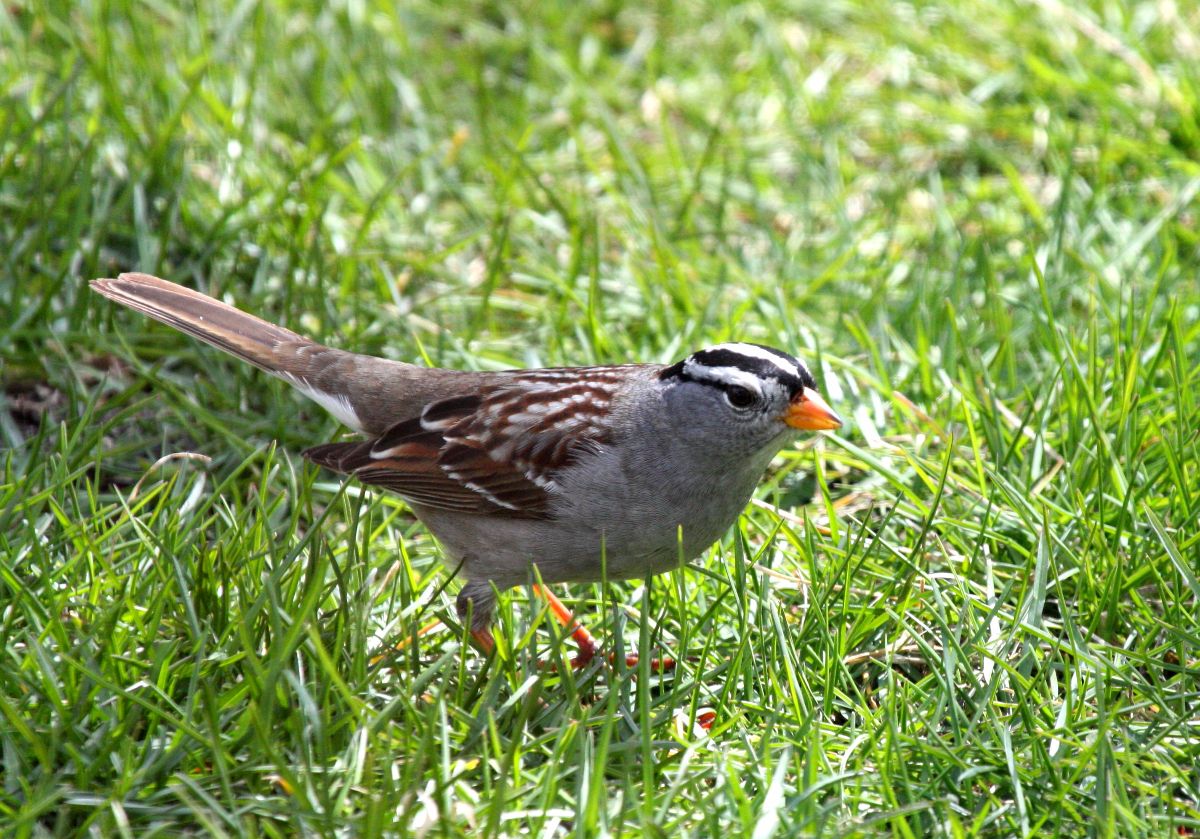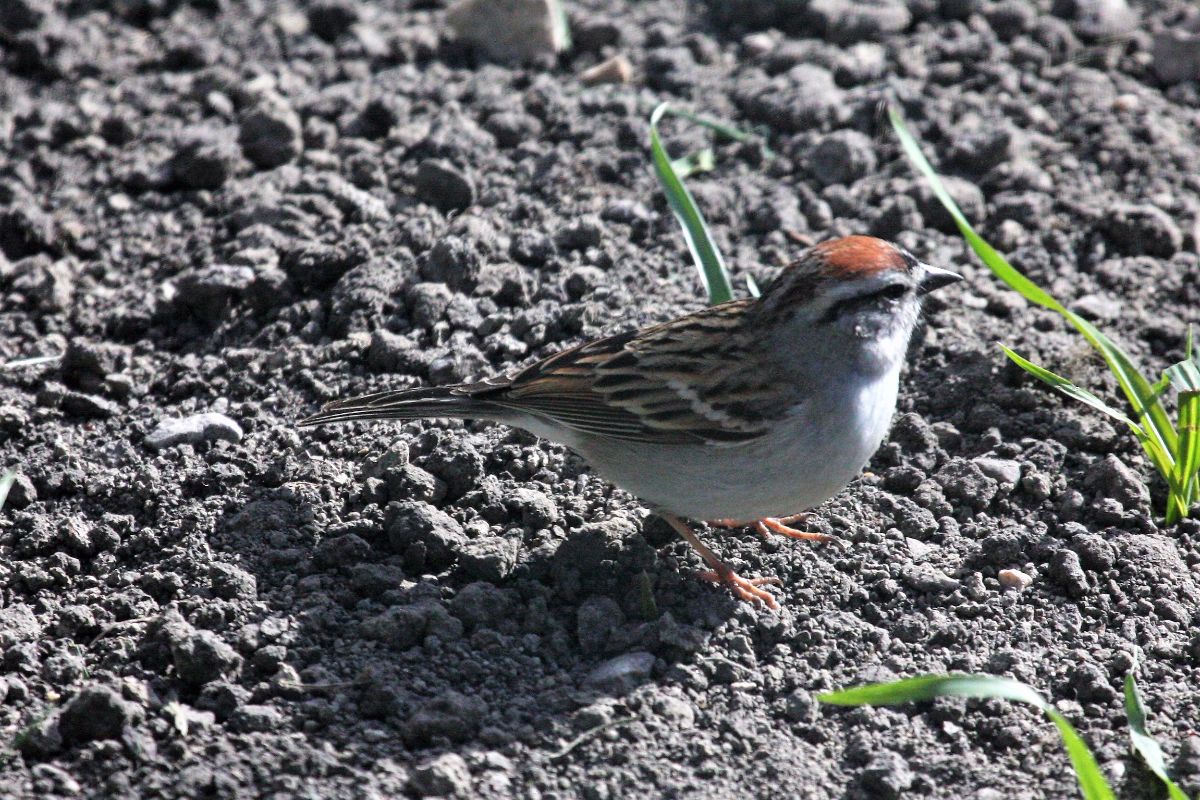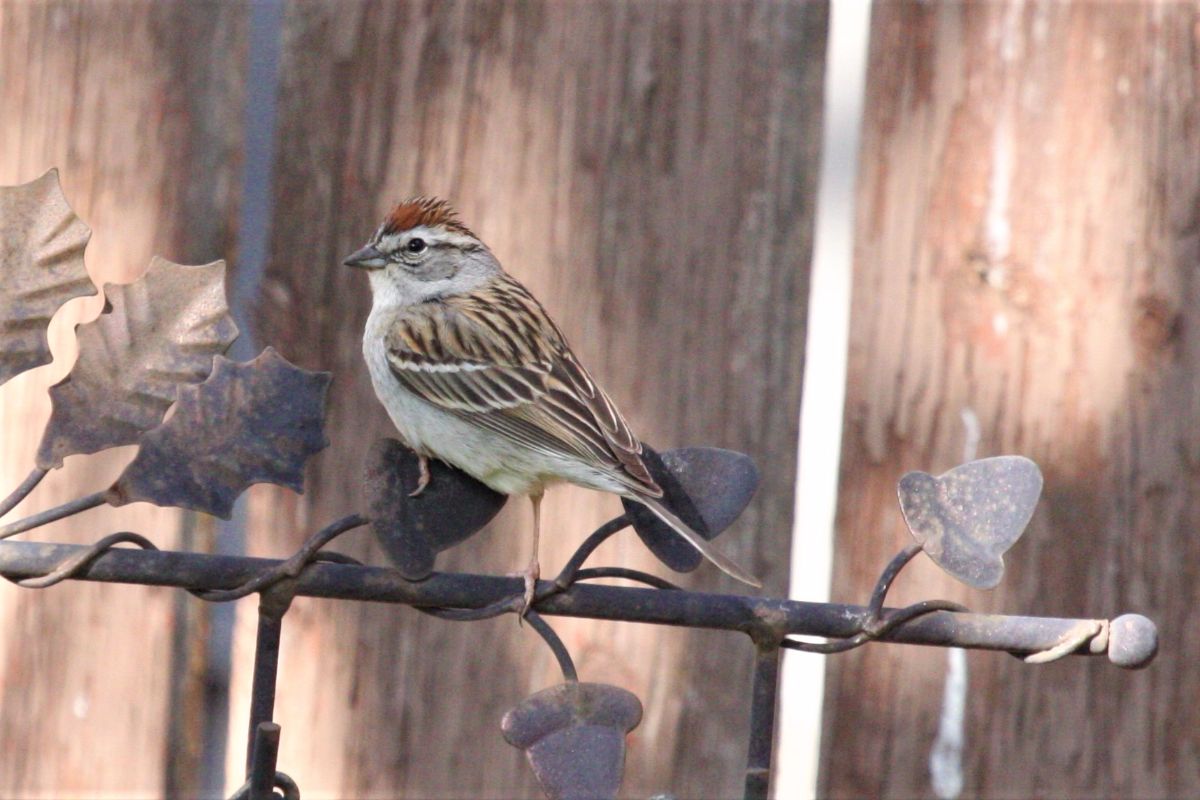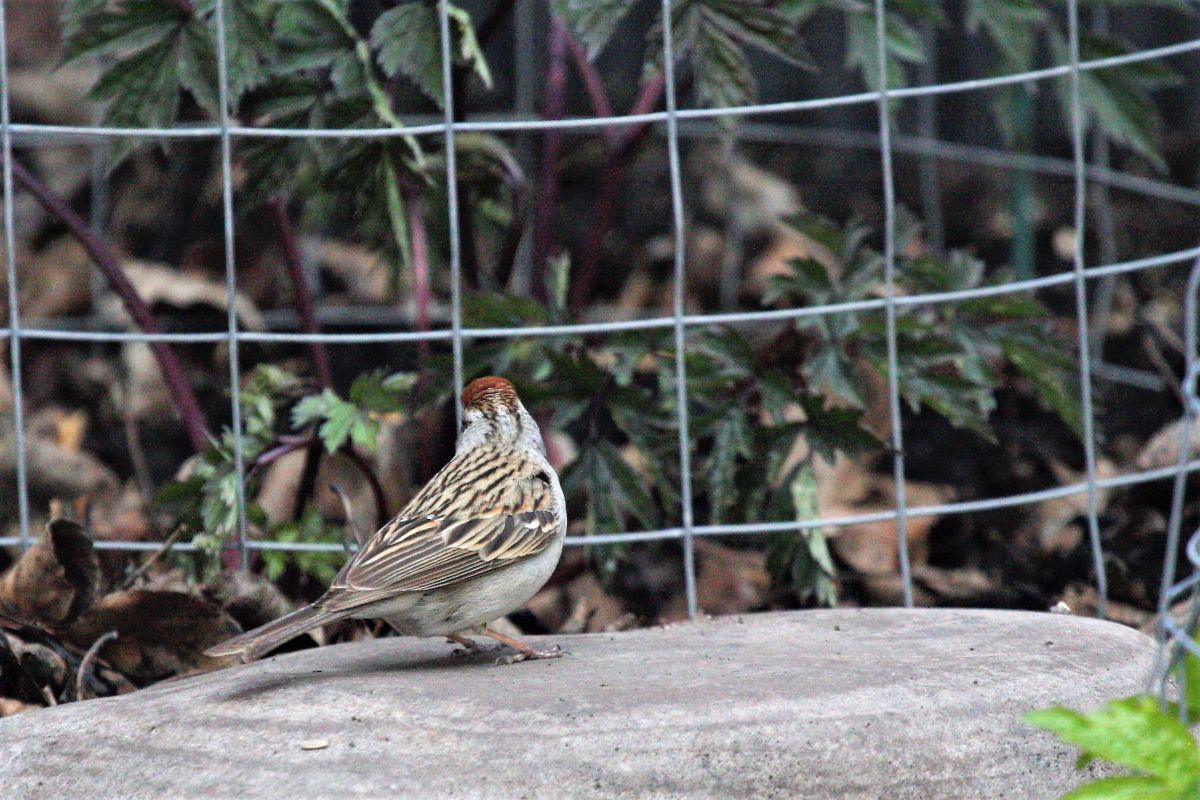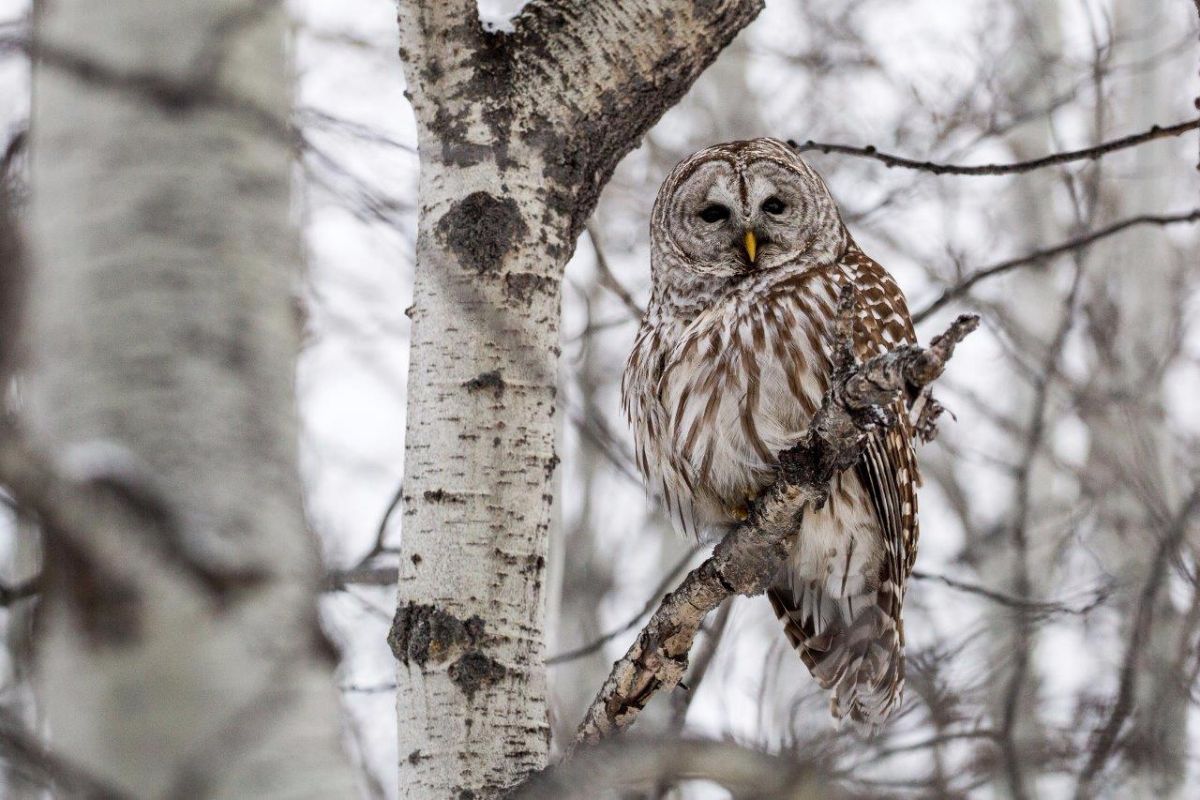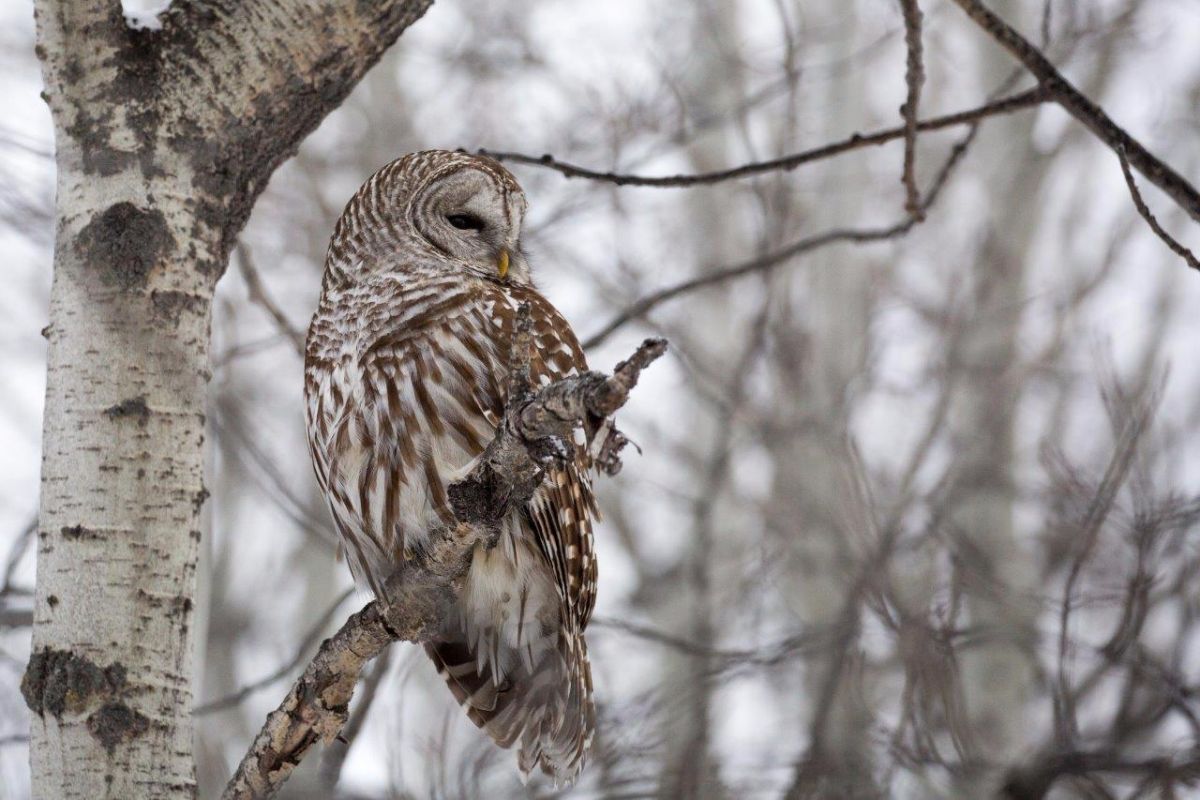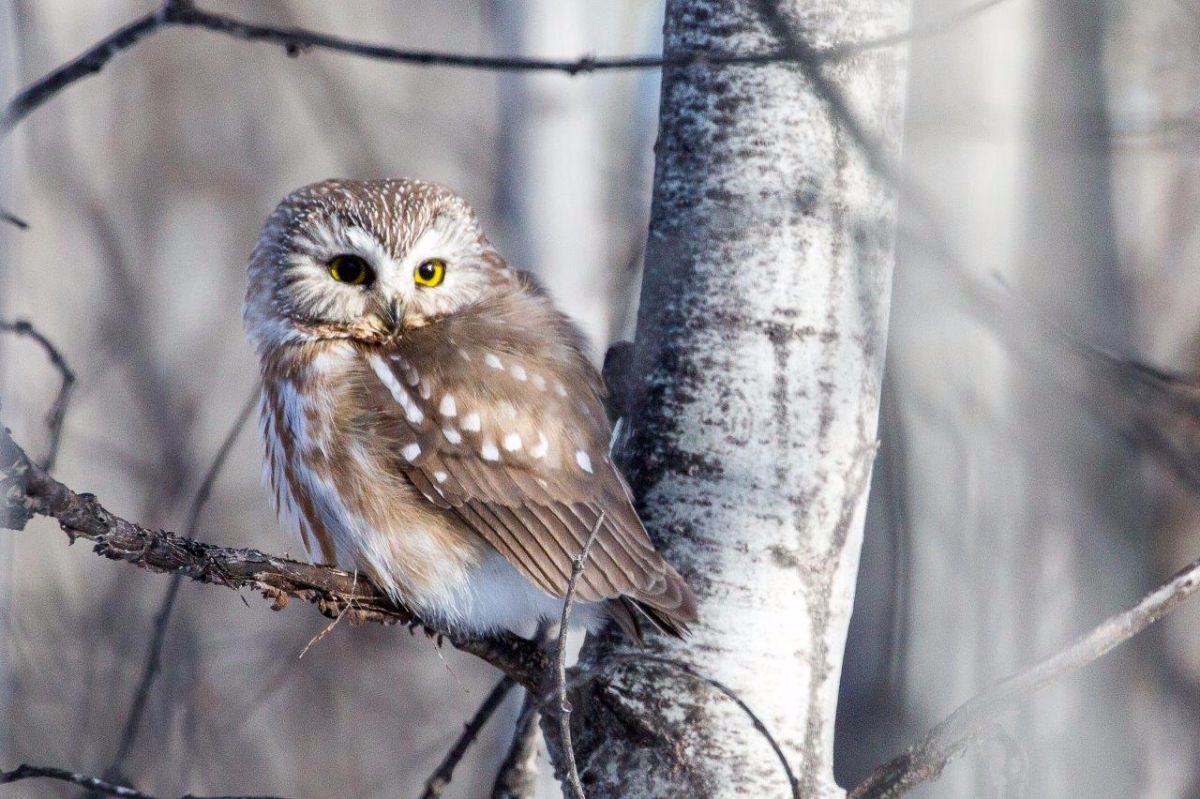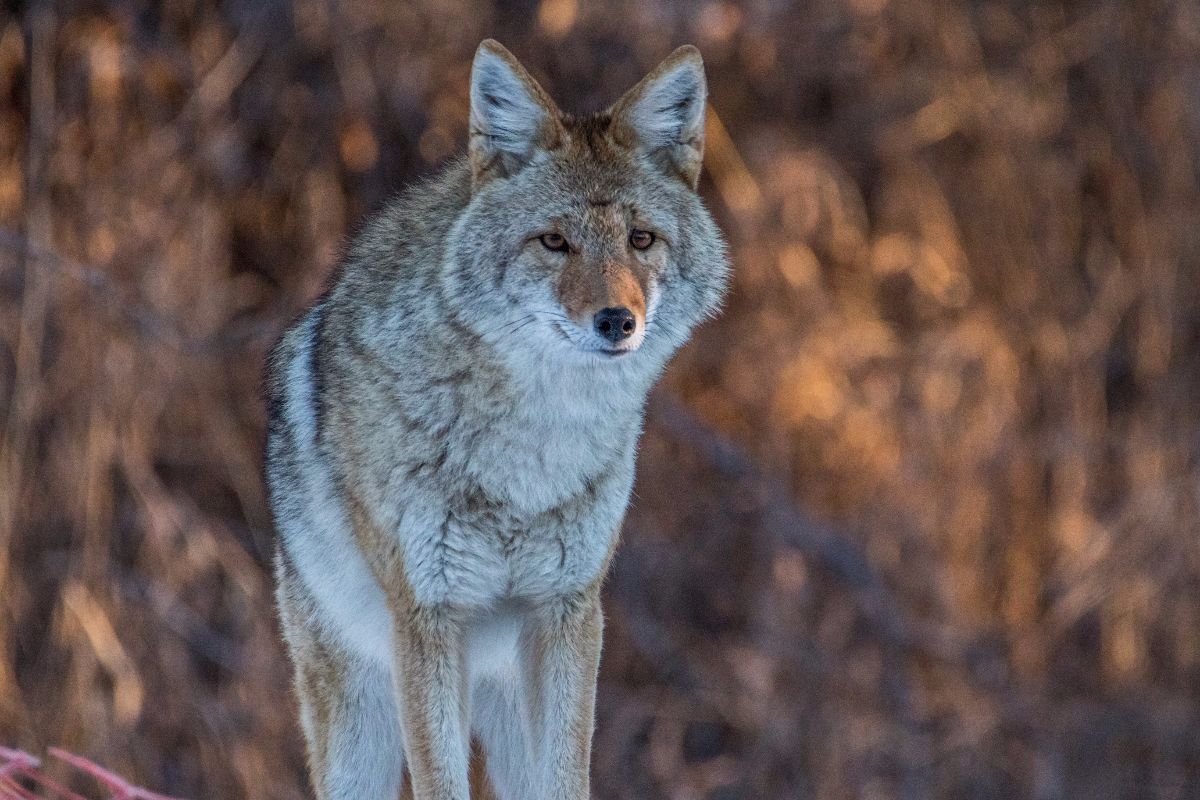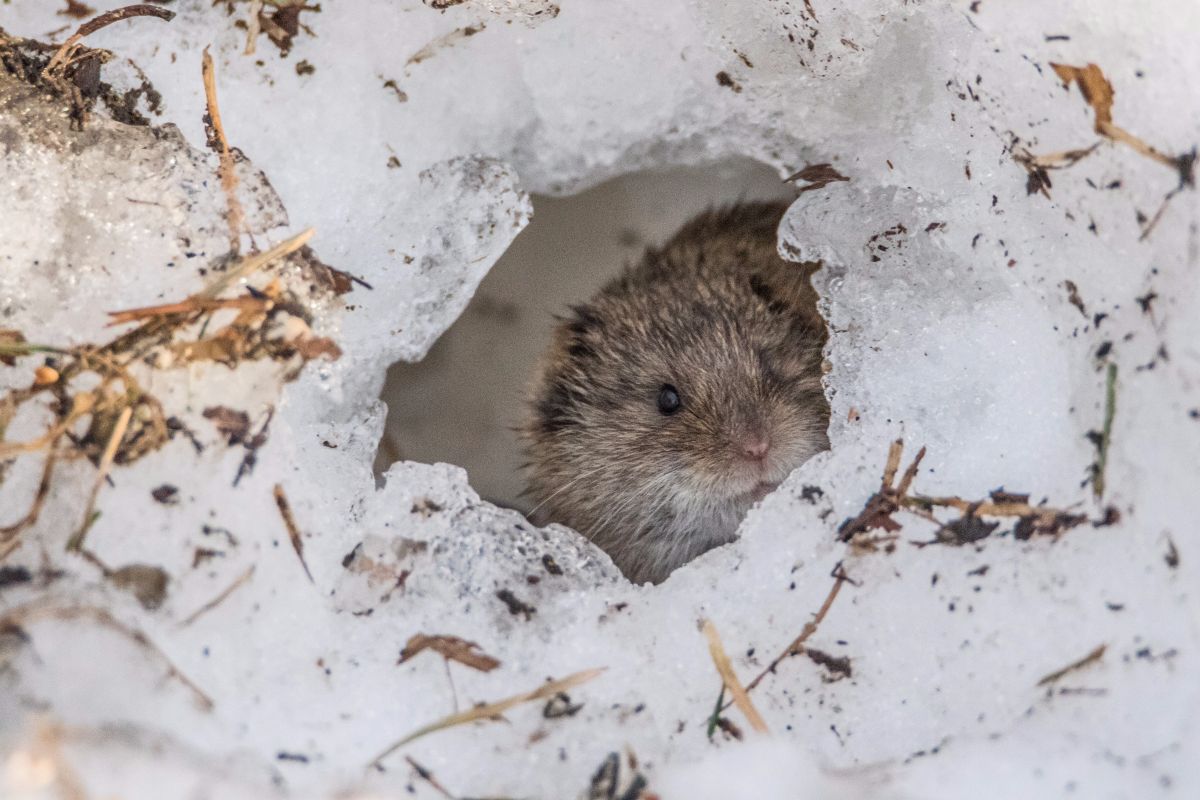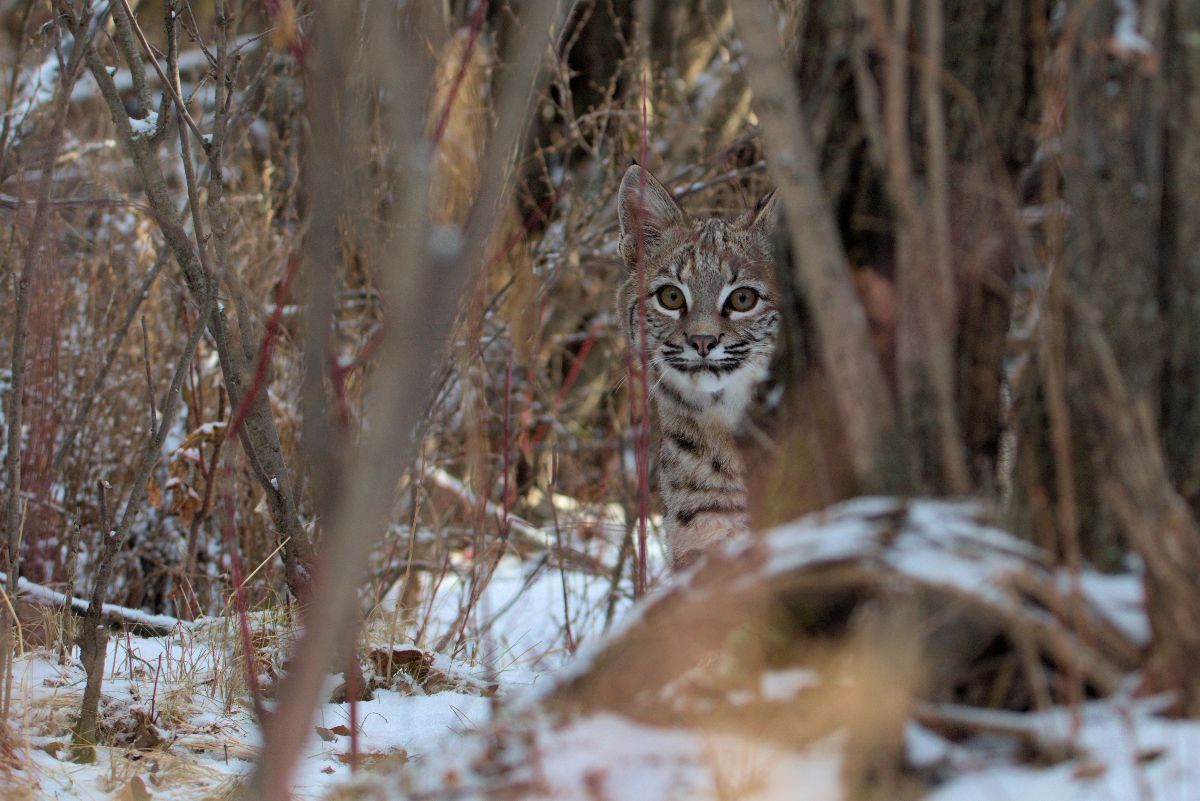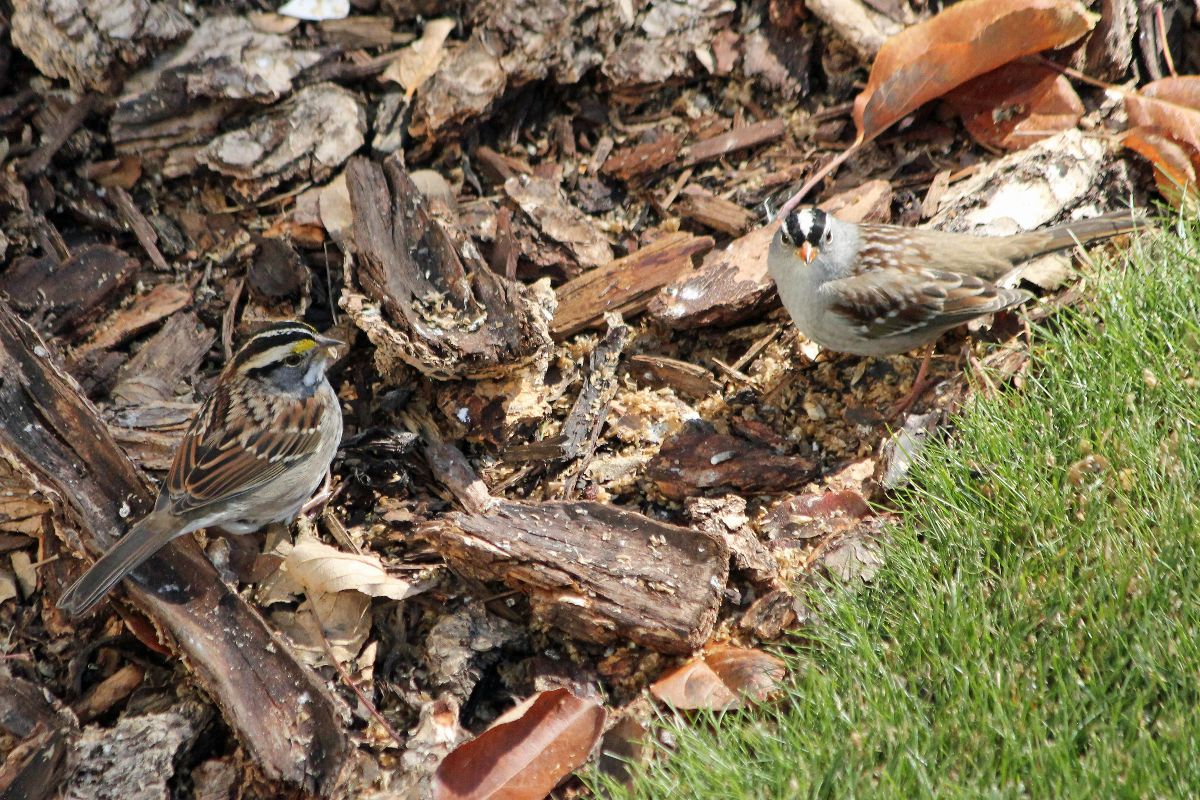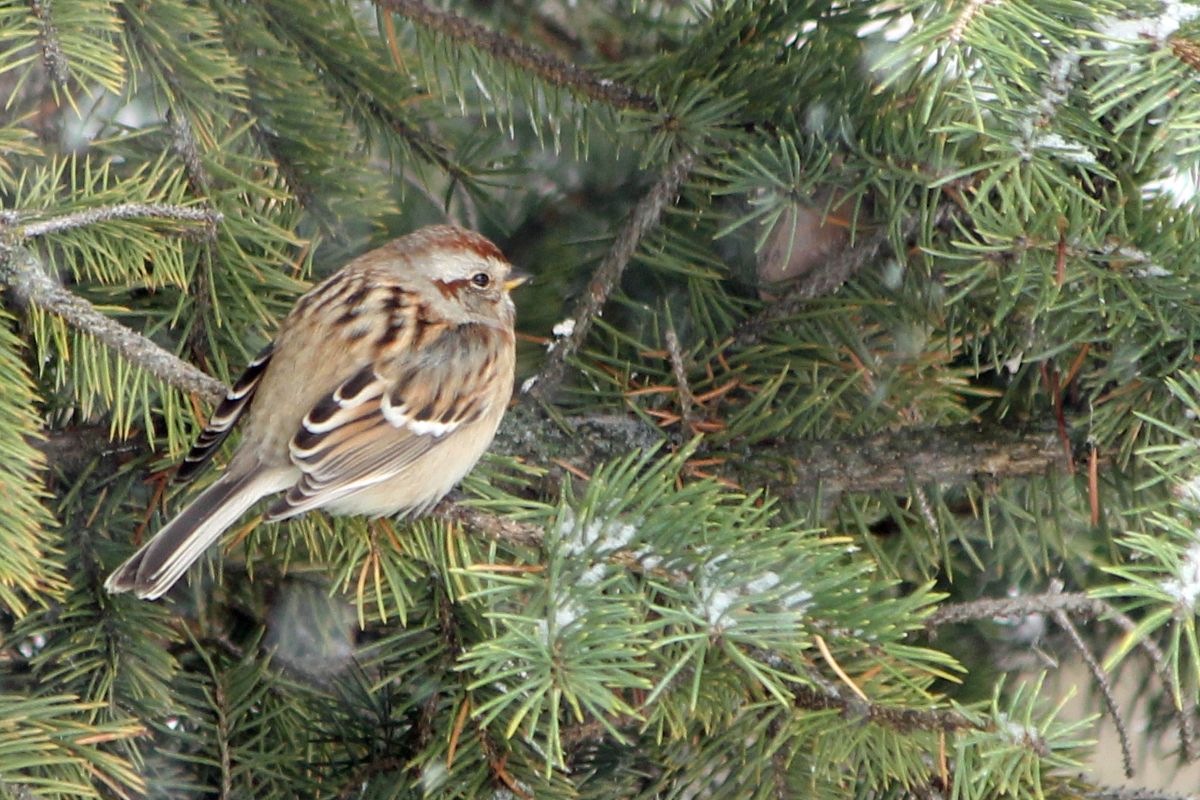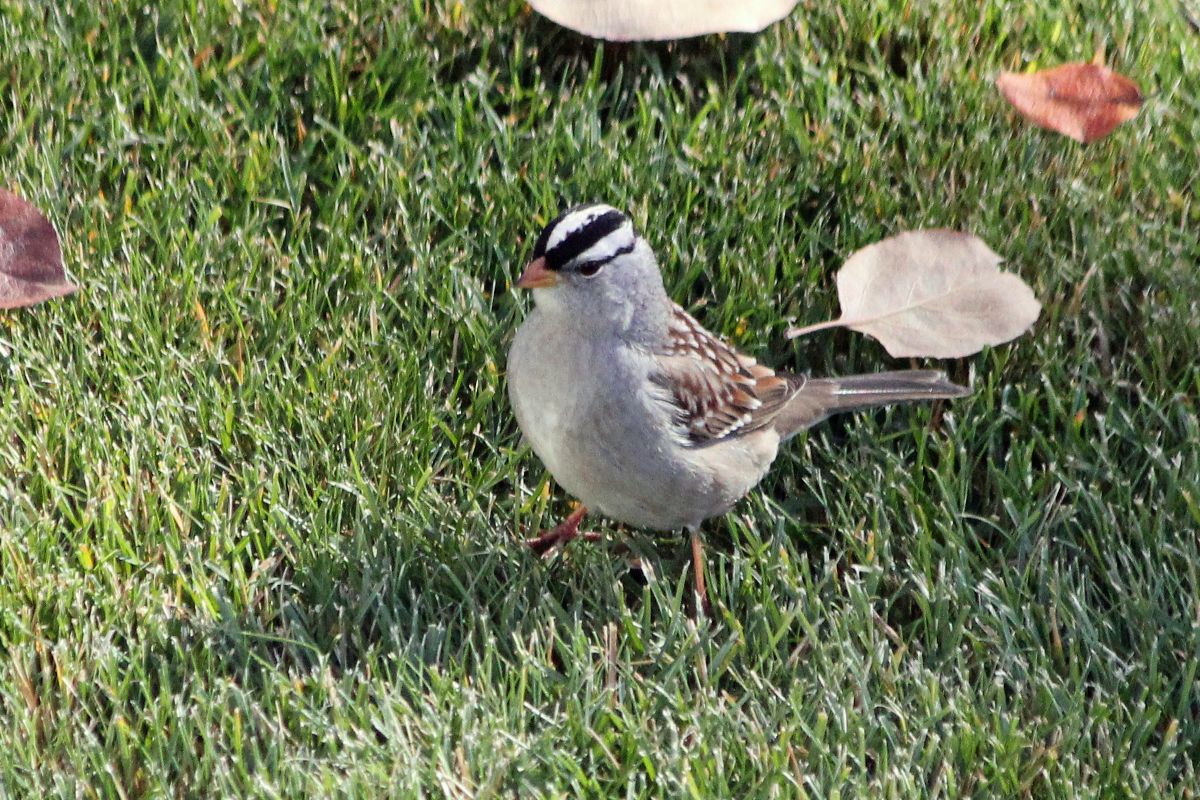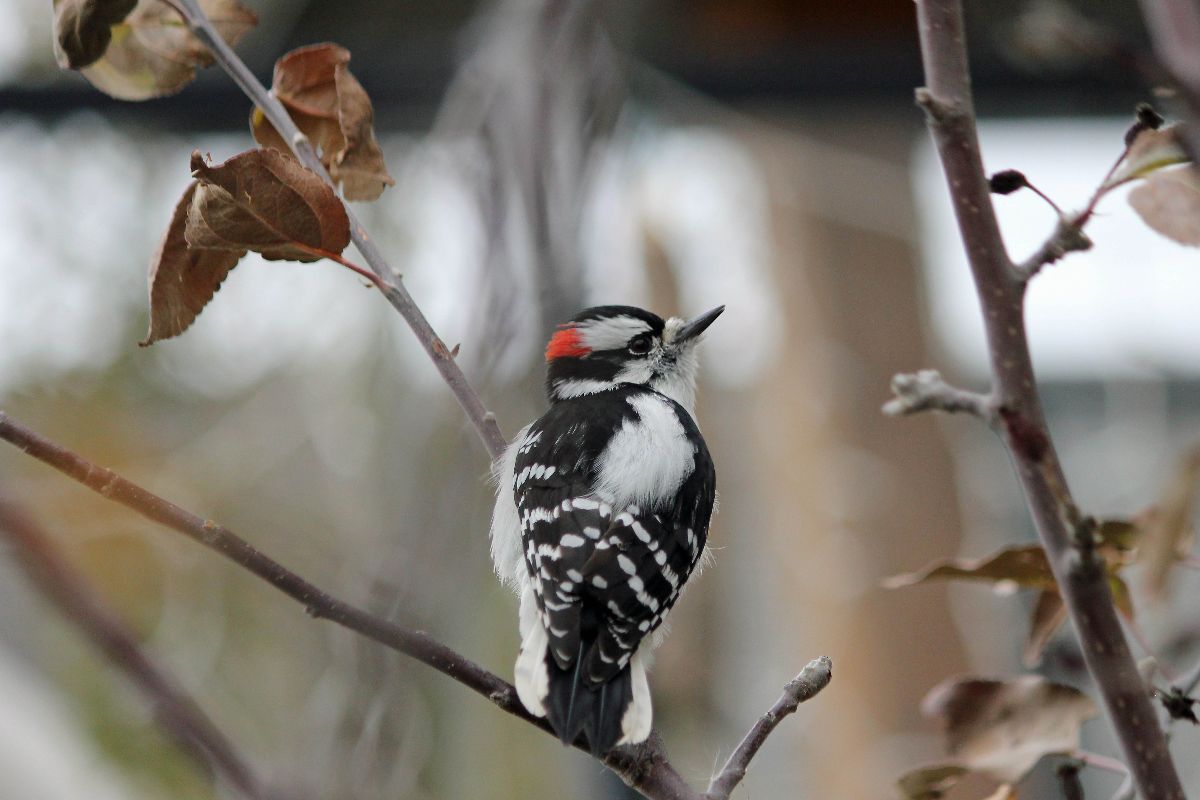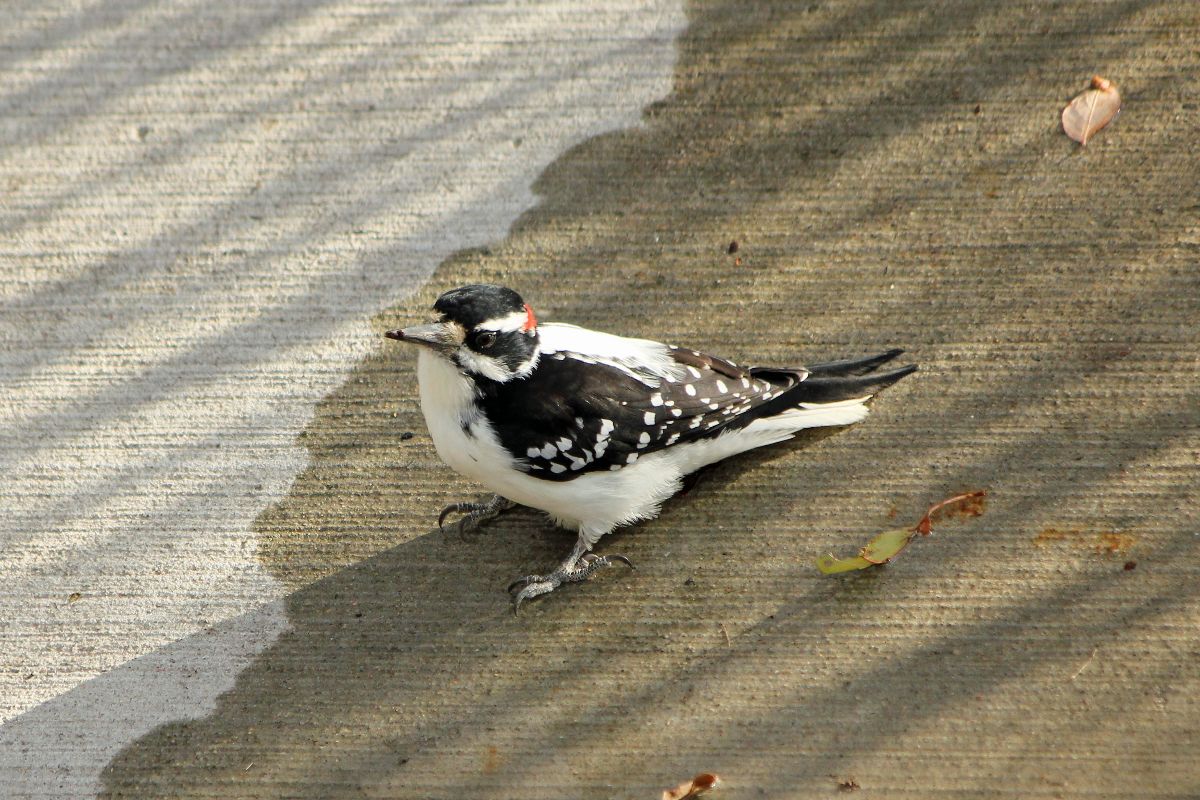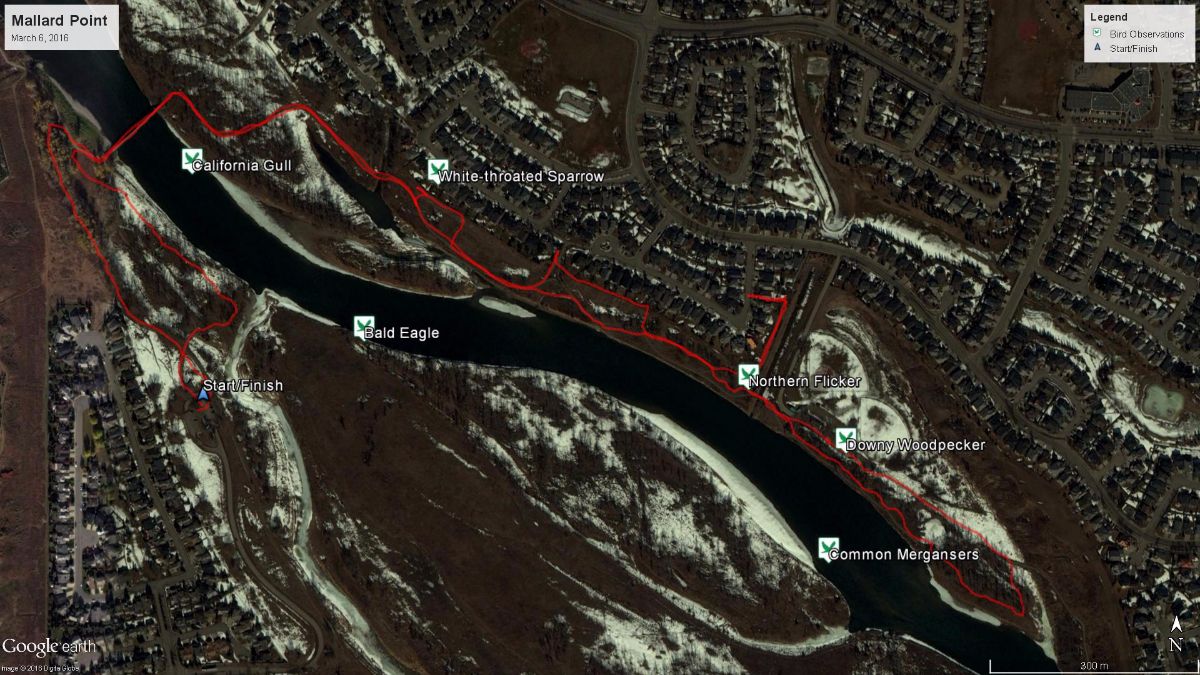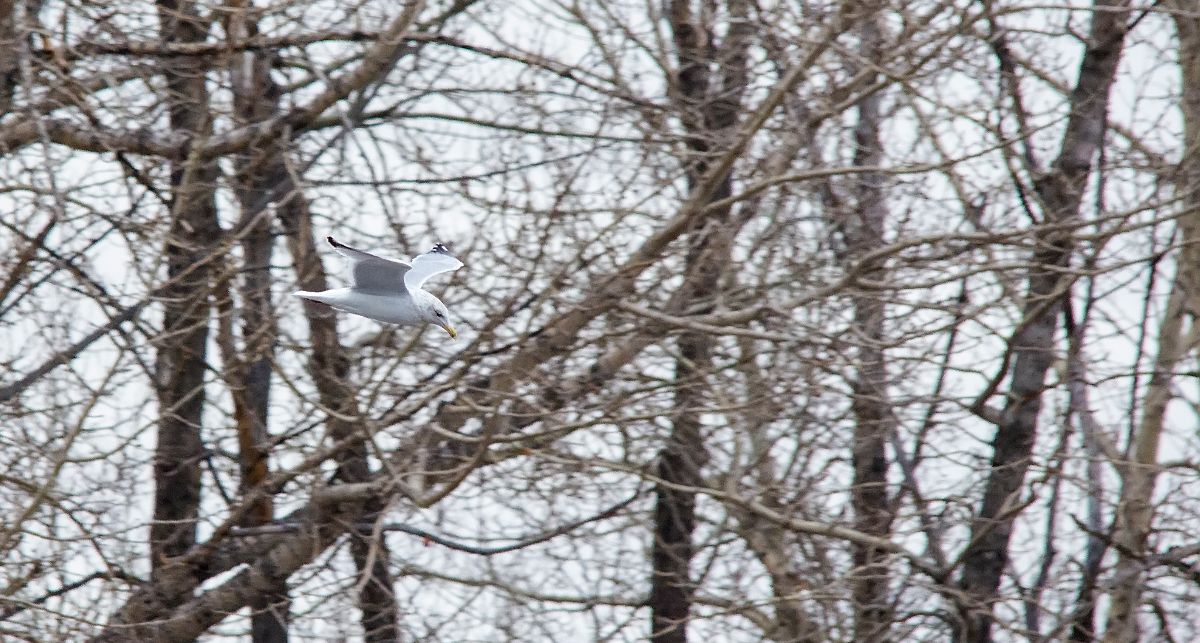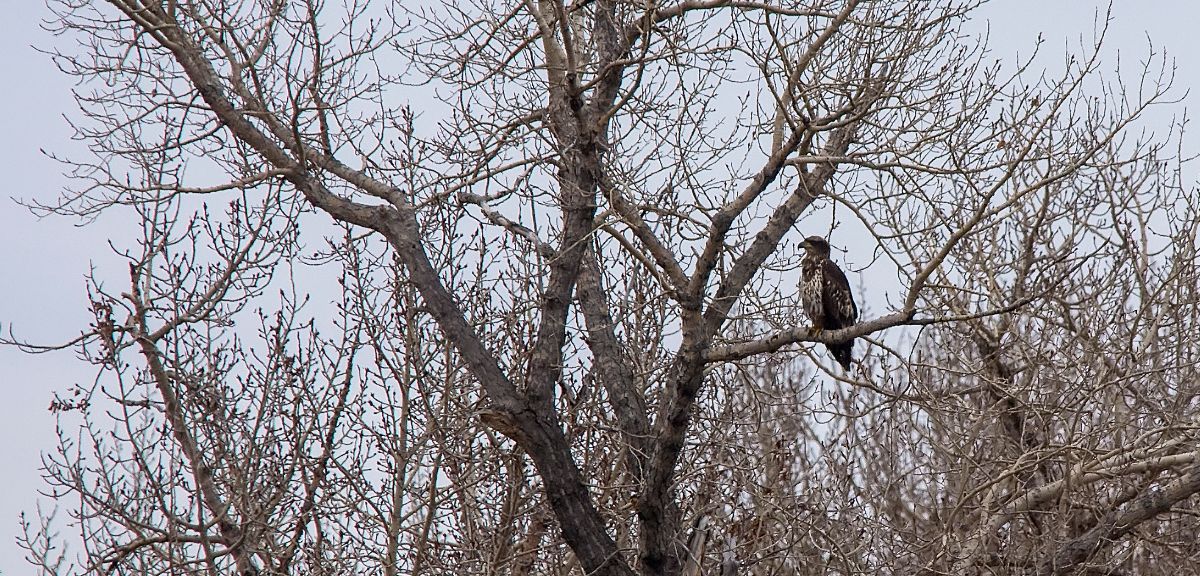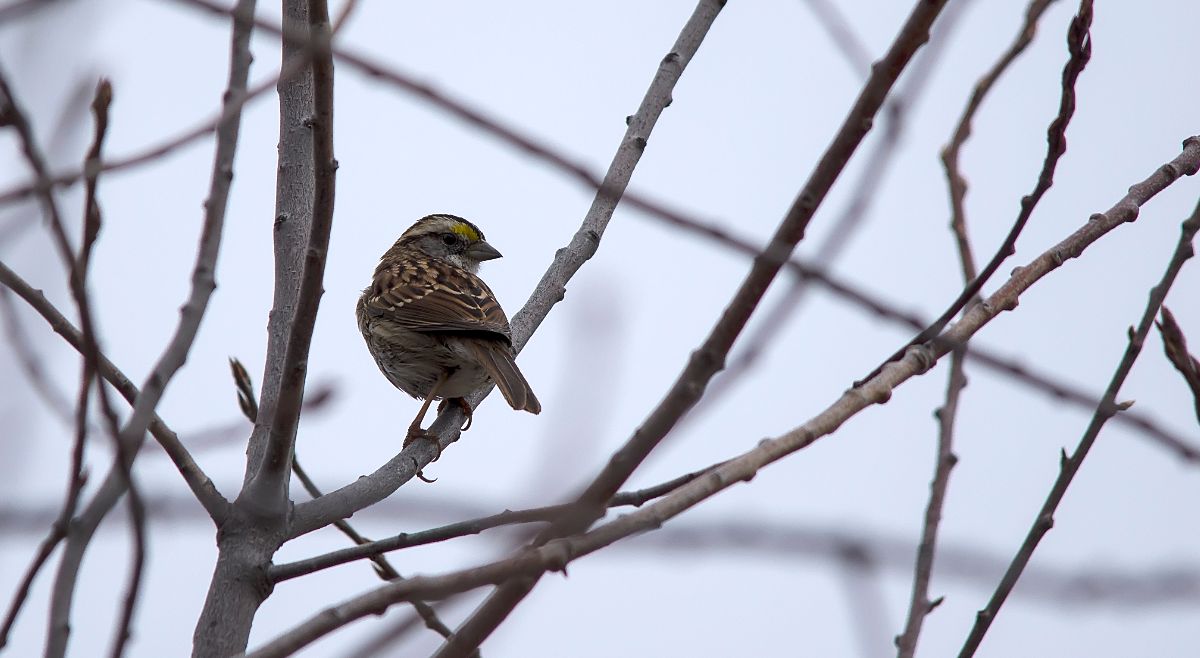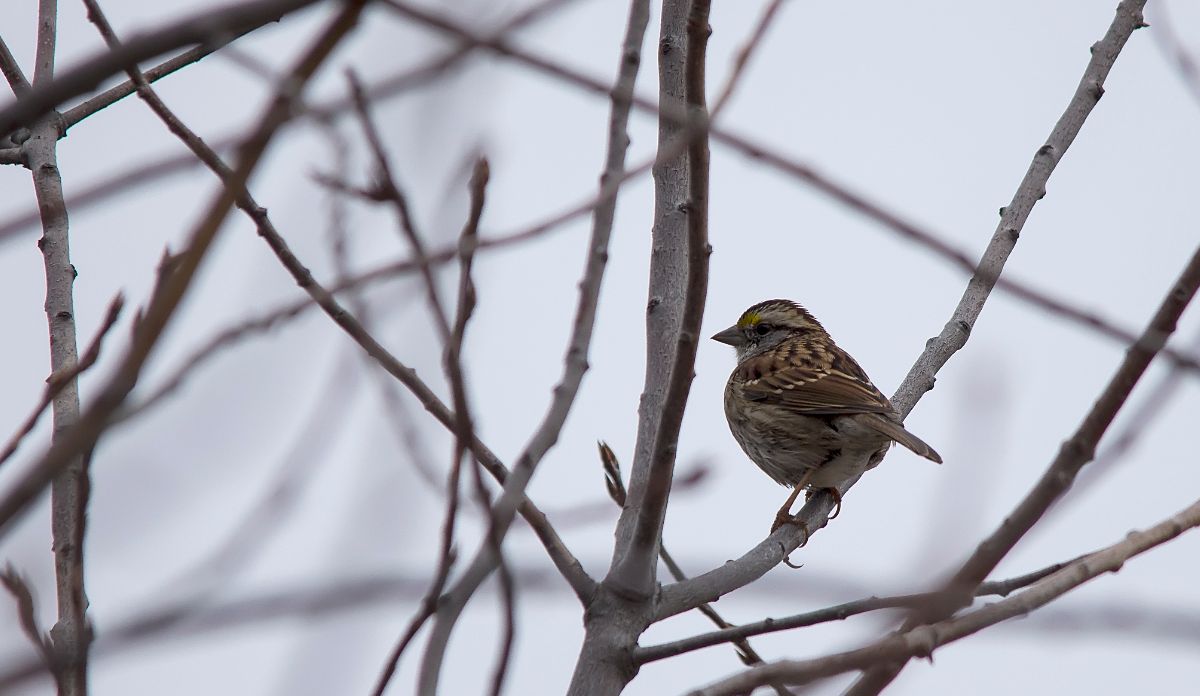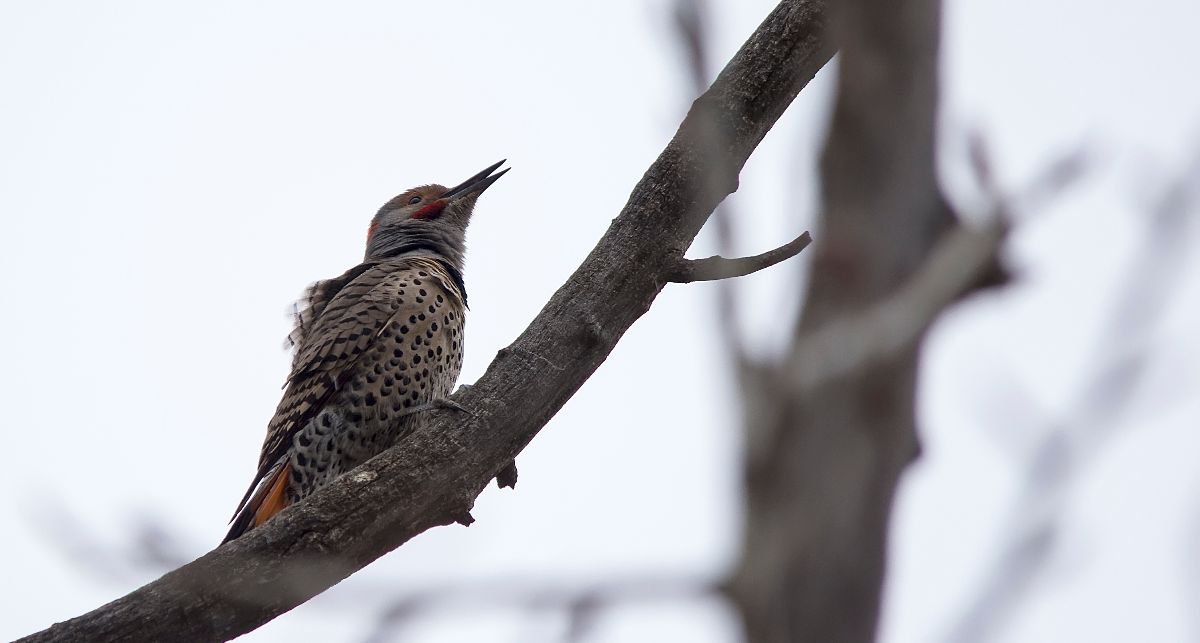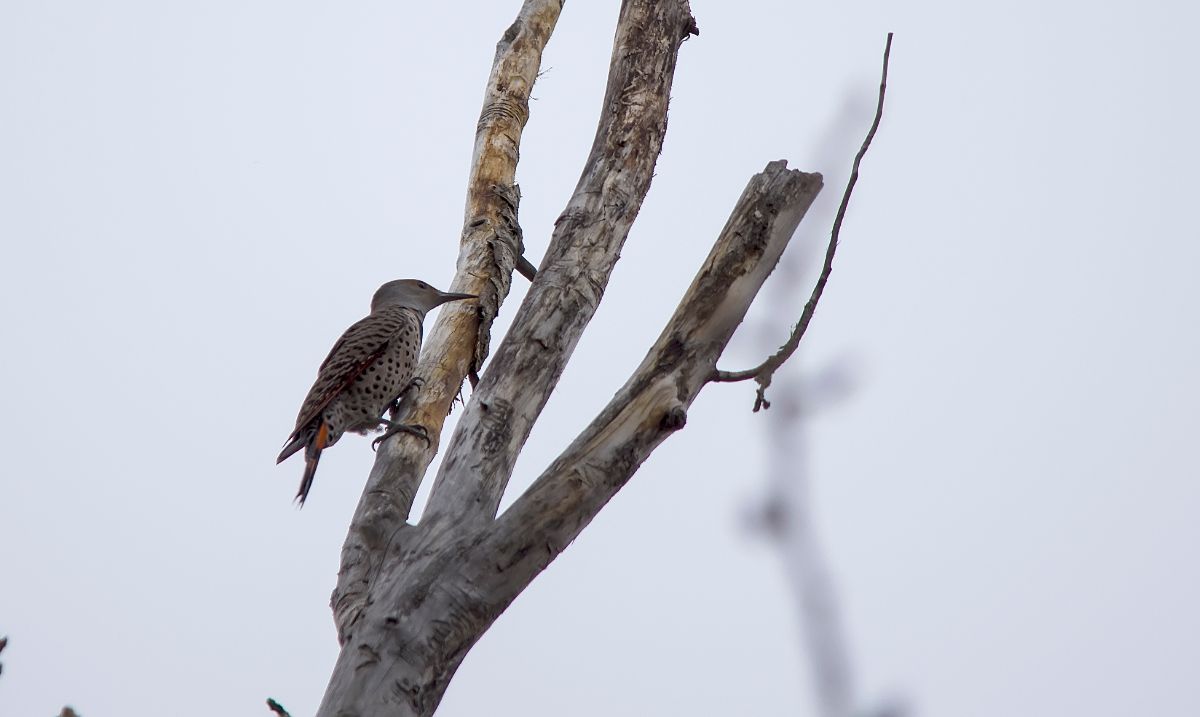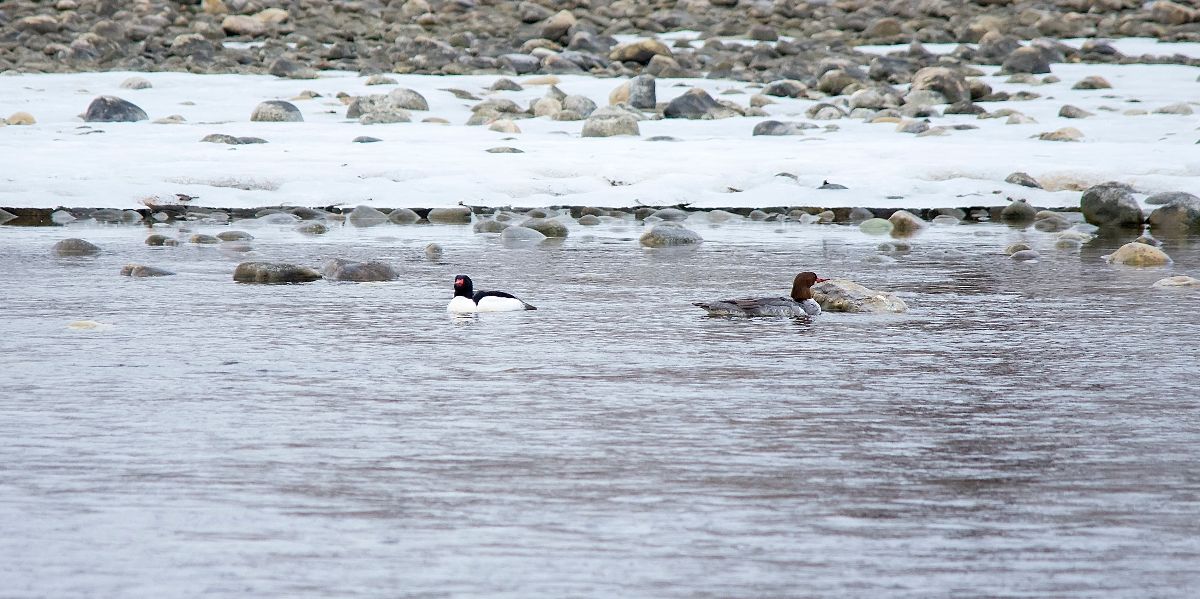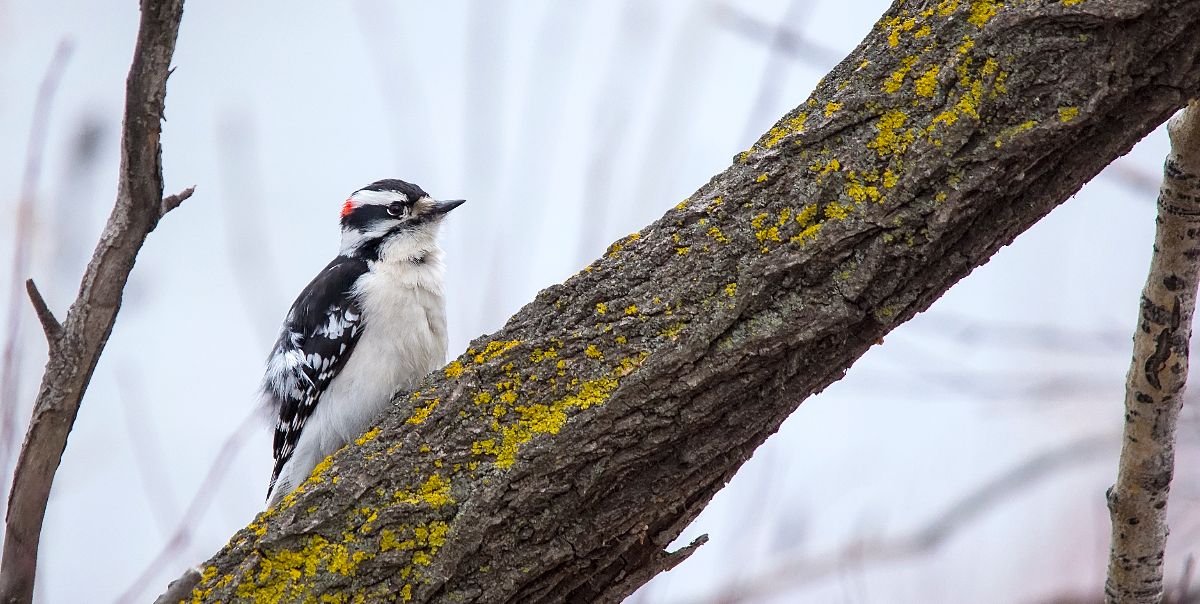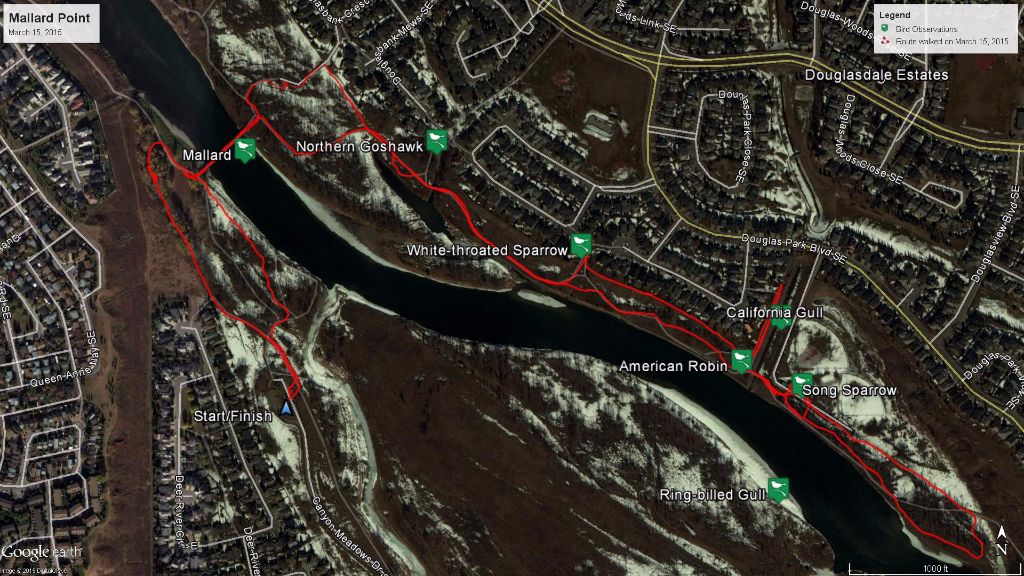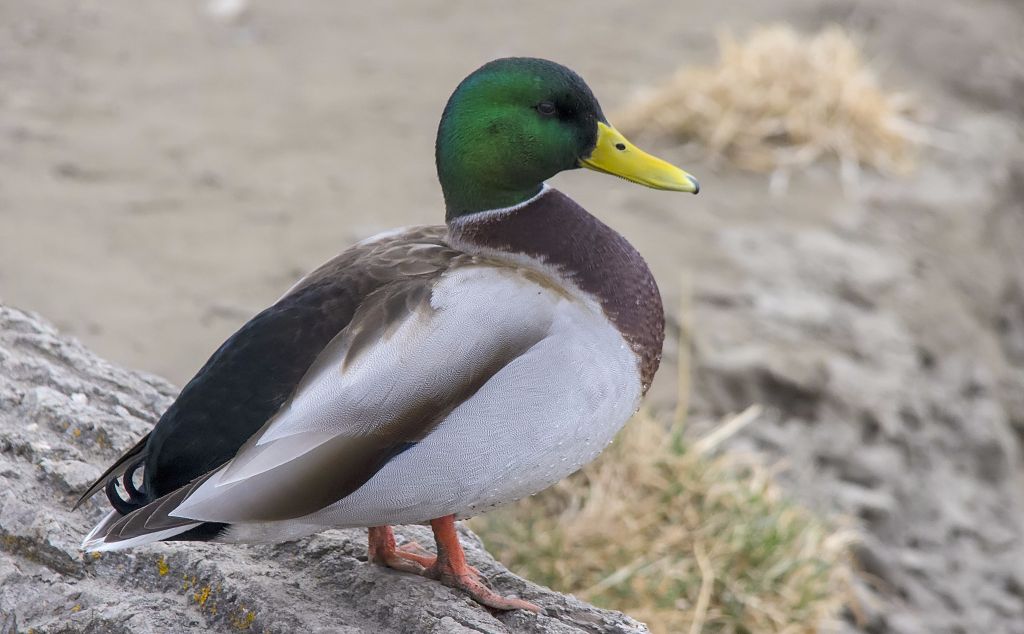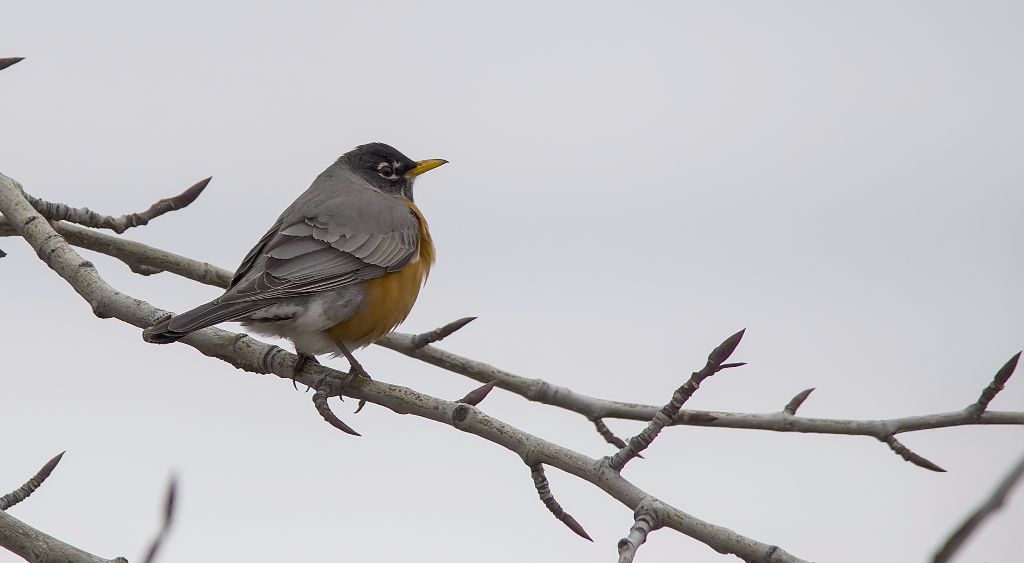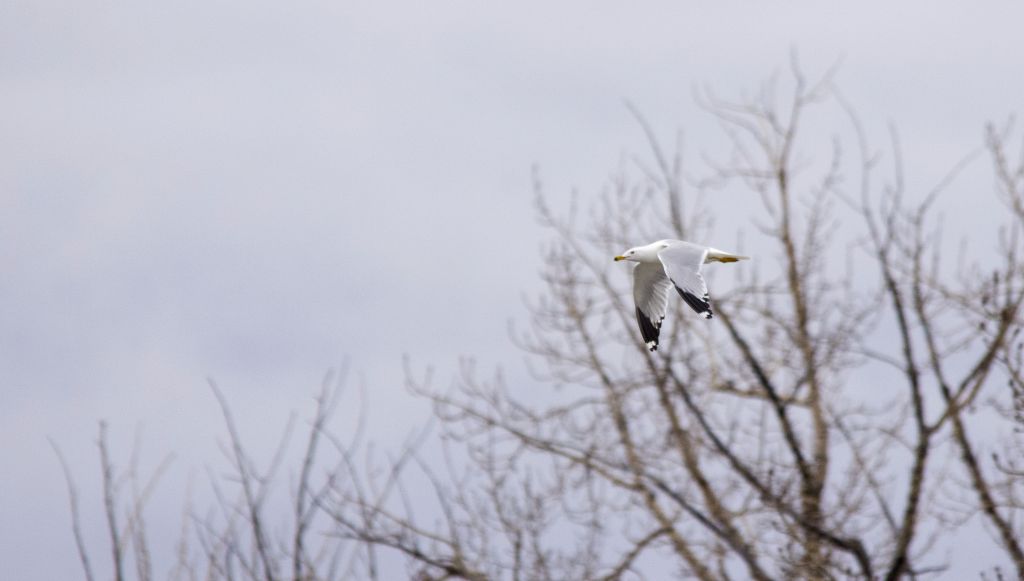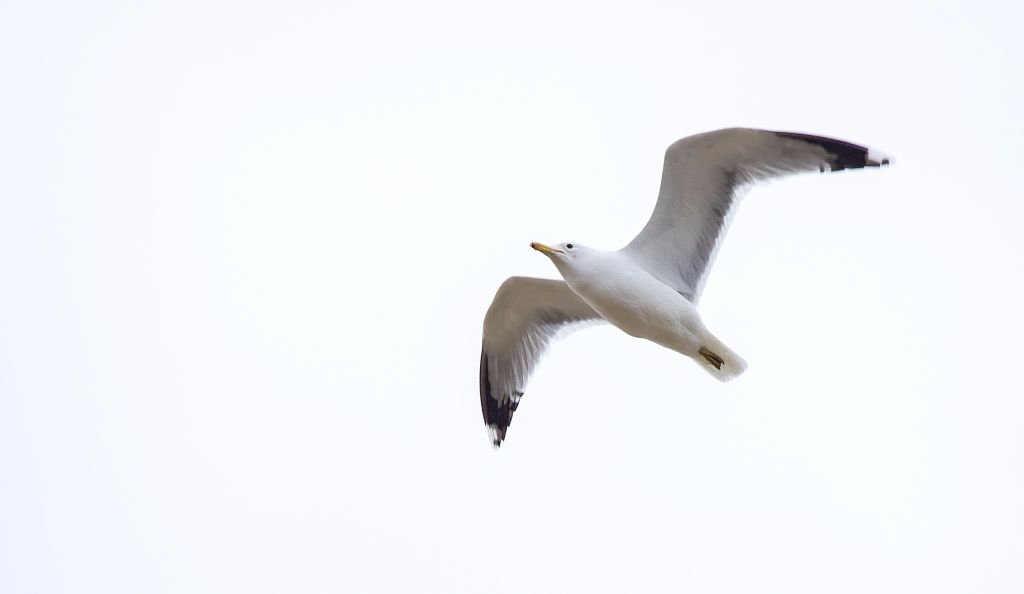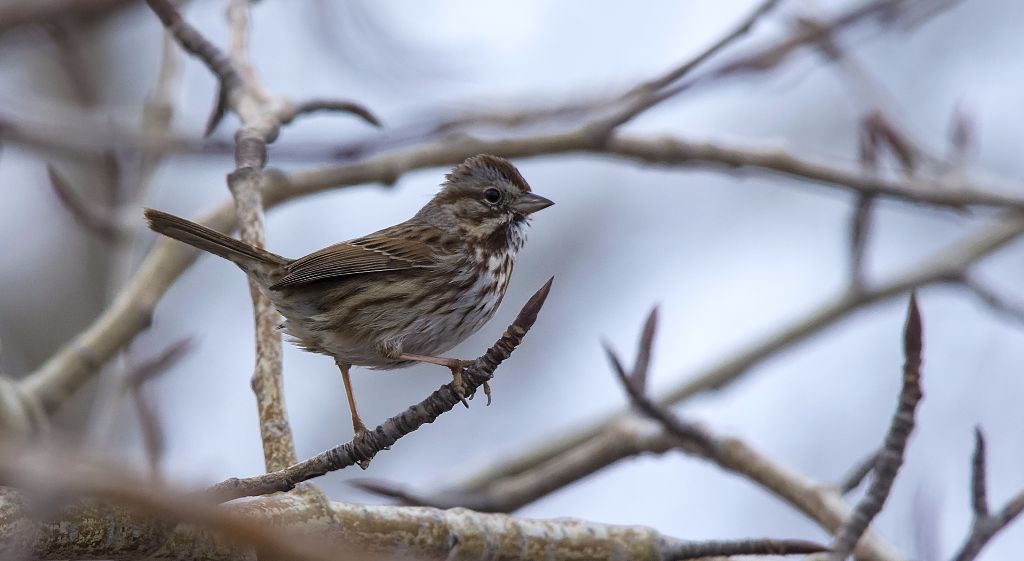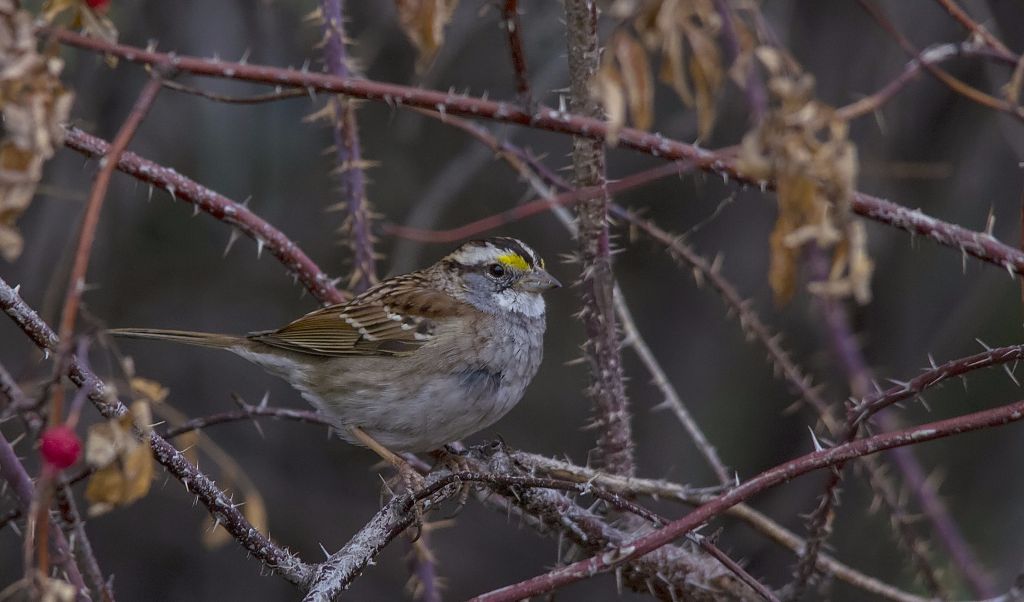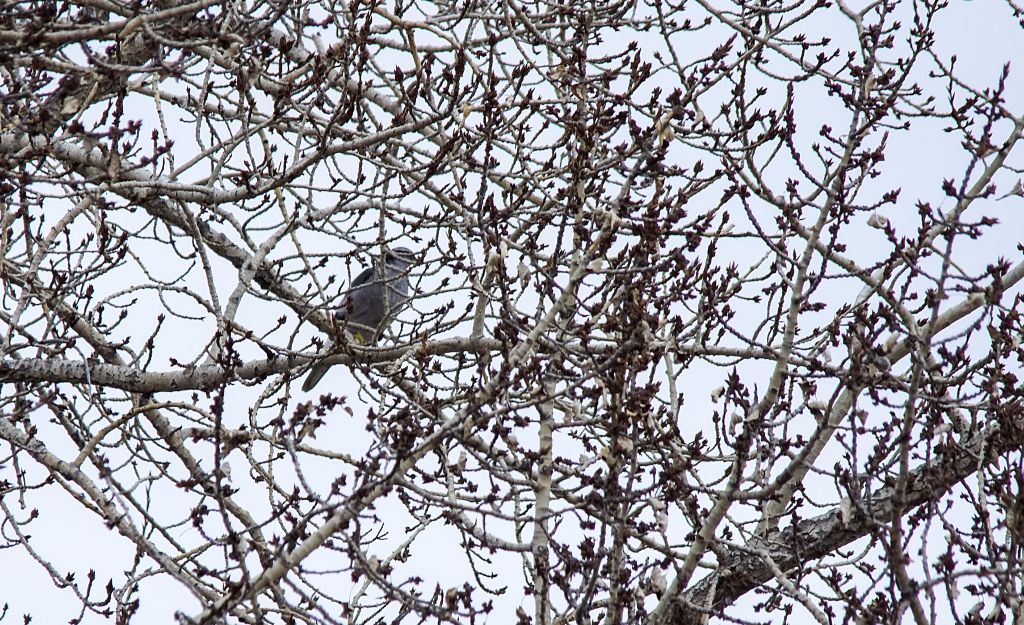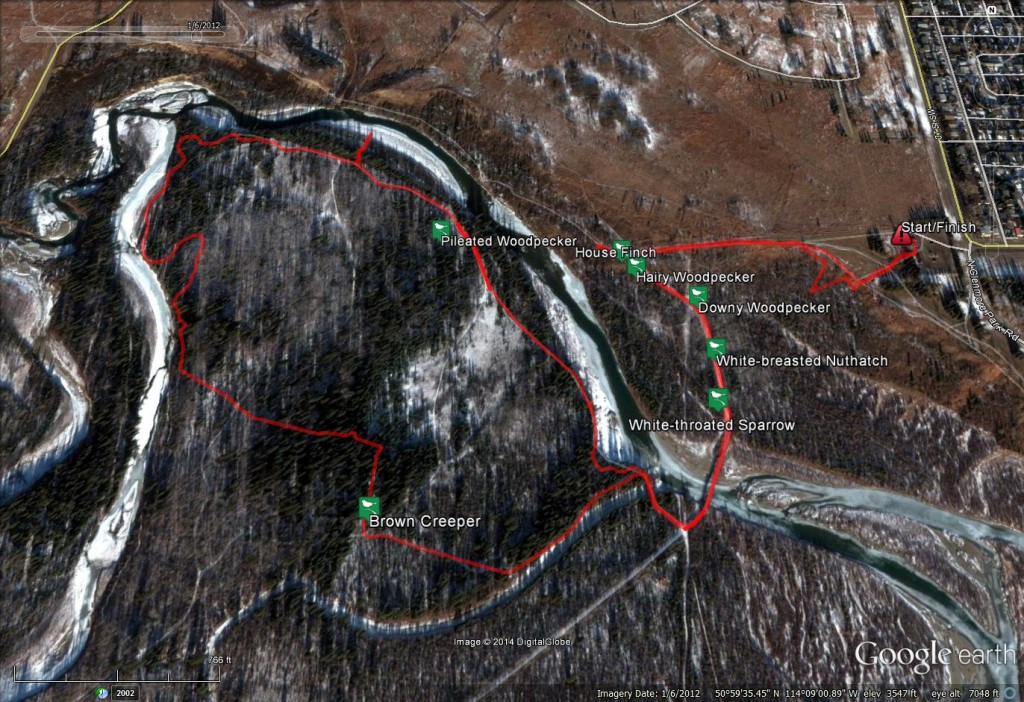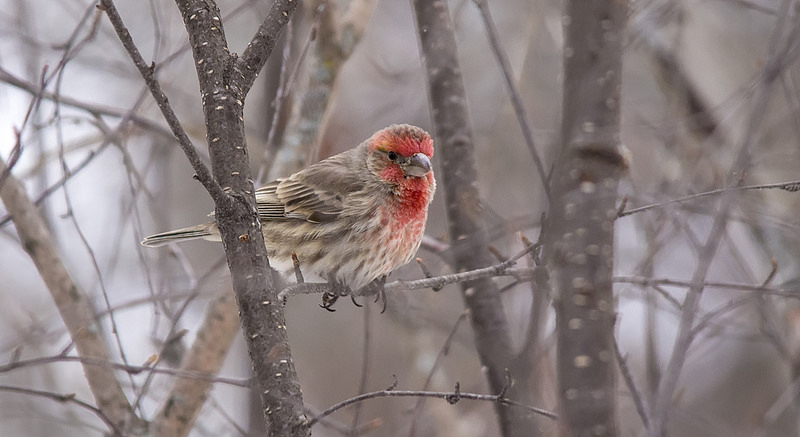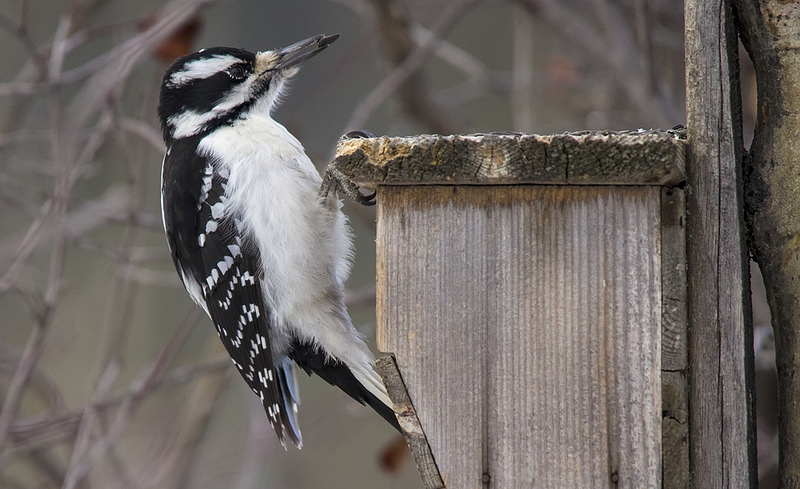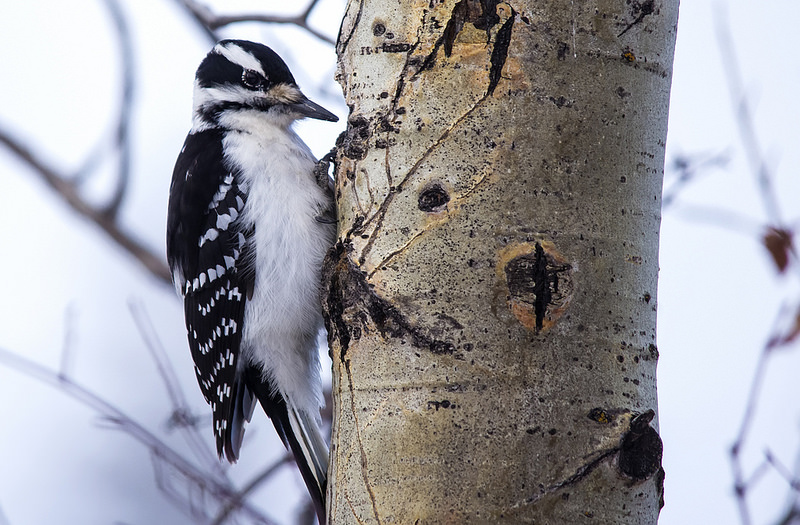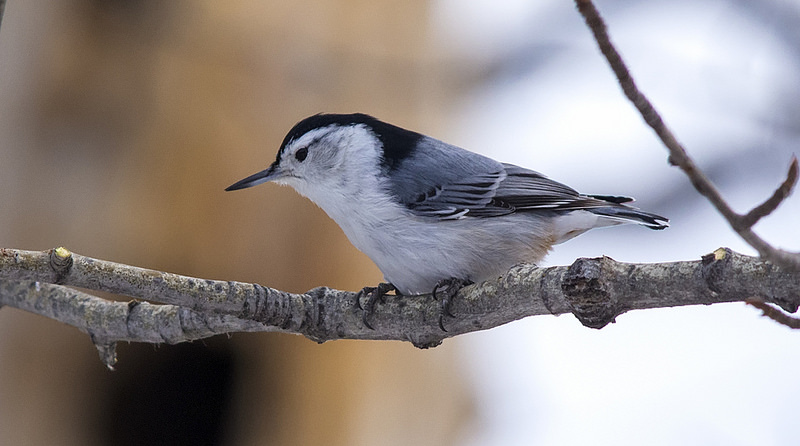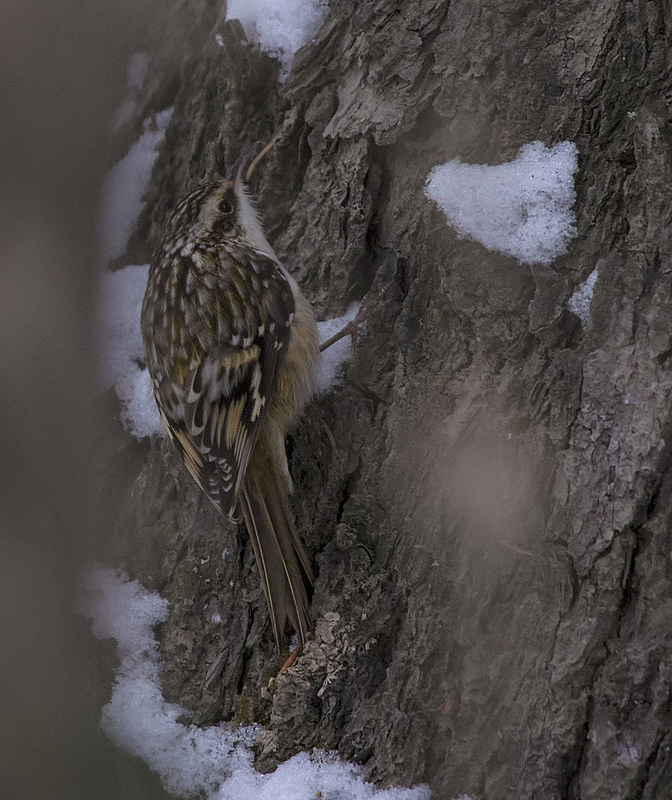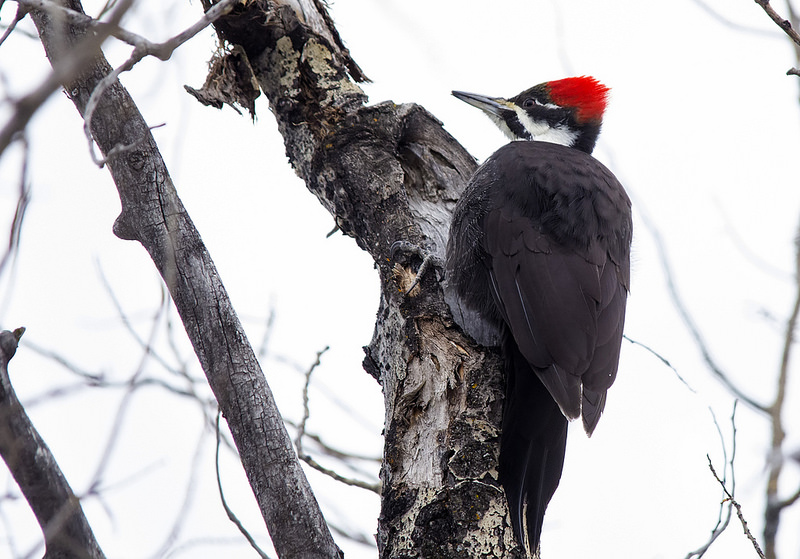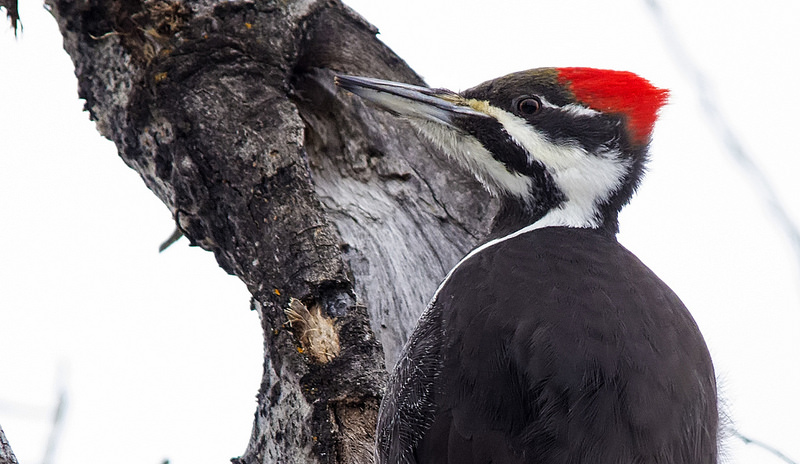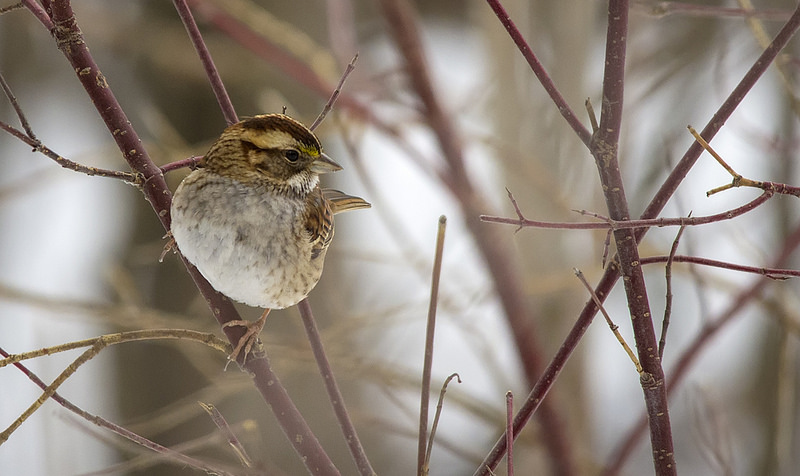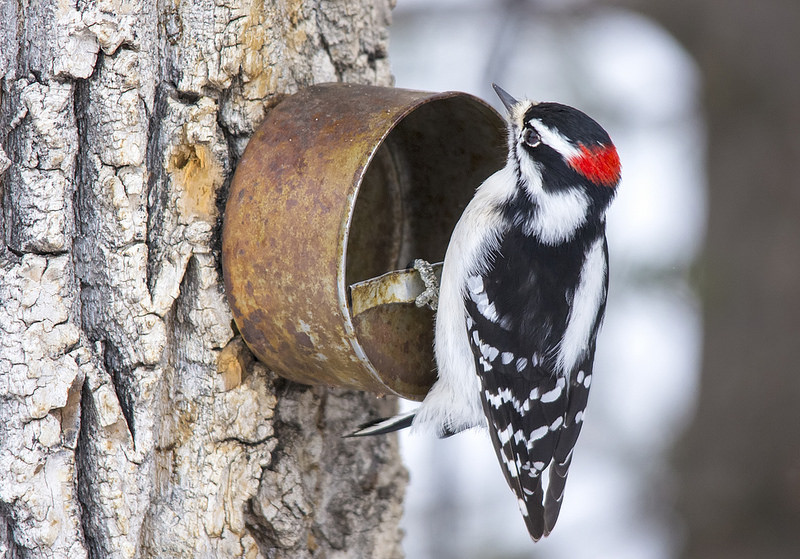Posted by Bob Lefebvre
White-throated Sparrows are a common summer bird of the boreal forest, and in Calgary you can see them and hear their beautiful song in places like the Weaselhead and the west end of Fish Creek Park, where they breed. Their wintering grounds are in the eastern and southern United States and on the west coast from Washington to California, a long way from Calgary. Nevertheless, it isn’t unusual for a few to overwinter here, and if you feed birds in your yard they will come looking for seeds. I have had one coming to my yard all winter. Gus Yaki has also had one in his yard all winter, and a couple of others have been reported around the city.

White-throated Sparrow (left) and a Slate-colored Dark-eyed Junco (right), Calgary, January 2018.
I first saw this bird in November 2017, feeding with a small flock of Dark-eyed Juncos. I have seen it periodically up to as recently as March 2018. It is always with Dark-eyed Juncos, another native sparrow species (the two sometimes interbreed and produce infertile offspring). These native sparrows prefer to feed on a flat surface like a tray, or on the ground.

White-throated Sparrow (left) and Dark-eyed Junco (right).
The distinguishing features of the White-throated Sparrow include the white throat which has a sharply defined lower border, the yellow lores (the spot in front of the eye), and the alternating dark and light head stripes. In this individual, an adult, the stripes are black and white. First-year birds have tan and brown head stripes, and there is also another adult colour morph which has tan and brown head stripes. The two adult colour morphs occur in roughly equal numbers. Interestingly, each adult almost always mates with the opposite colour morph, so both traits persist.

White-throated Sparrow (left) and Dark-eyed Junco (right).
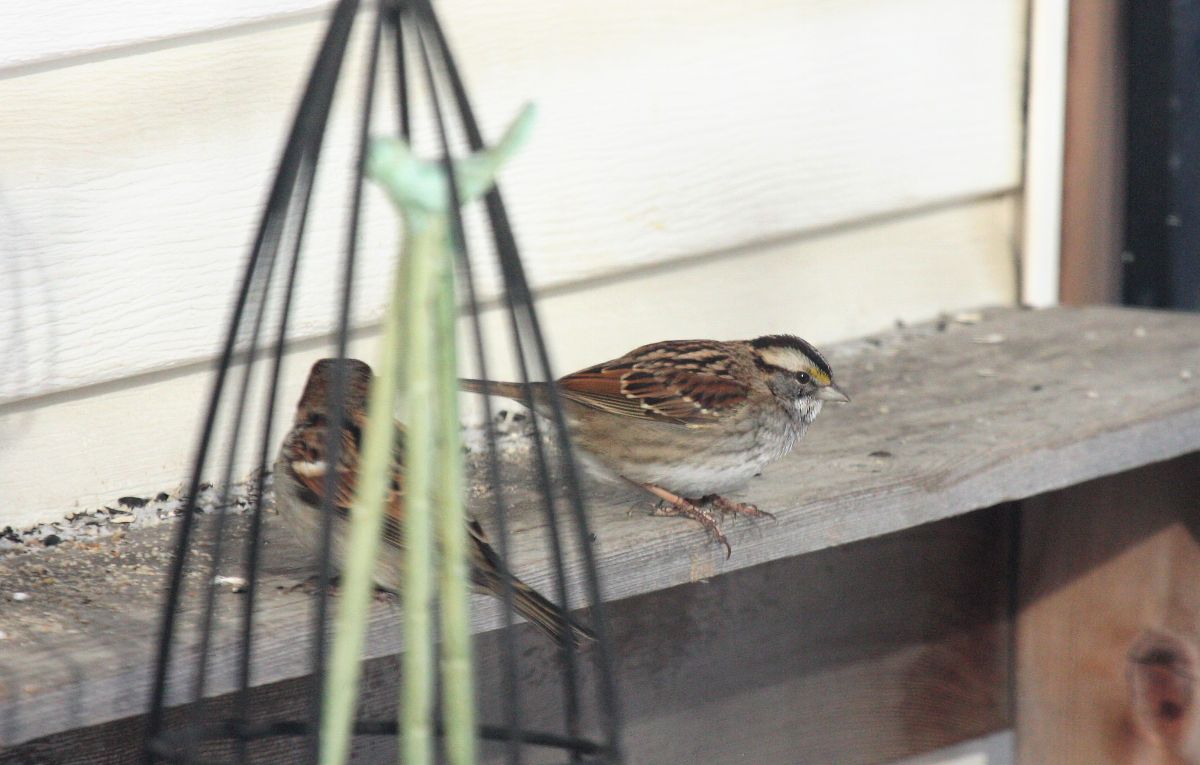
White-throated Sparrow (right). The other bird is a male House Sparrow.
In the above photo you can see the rufous colour in the wing of the White-throated Sparrow and the blurry streaks on the sides of the breast.
Sometimes a White-throated Sparrow will be feeding on the ground with a flock of House Sparrows. Even without binoculars you can usually pick them out by their feeding behavior. Like other native sparrows (the Dark-eyed Juncos and Lincoln’s Sparrows, for example) they tend to scratch for seeds with both feet simultaneously, jumping quickly ahead and back. House Sparrows (which are not native sparrows but an introduced European species) never do this. The White-throated Sparrow also has a longer tail than the House Sparrow.

White-throated Sparrow foraging for seeds in the snow.
Here is the song to listen for in the spring:
(Song is from the Xeno-Canto website.)

